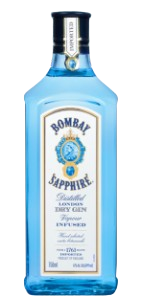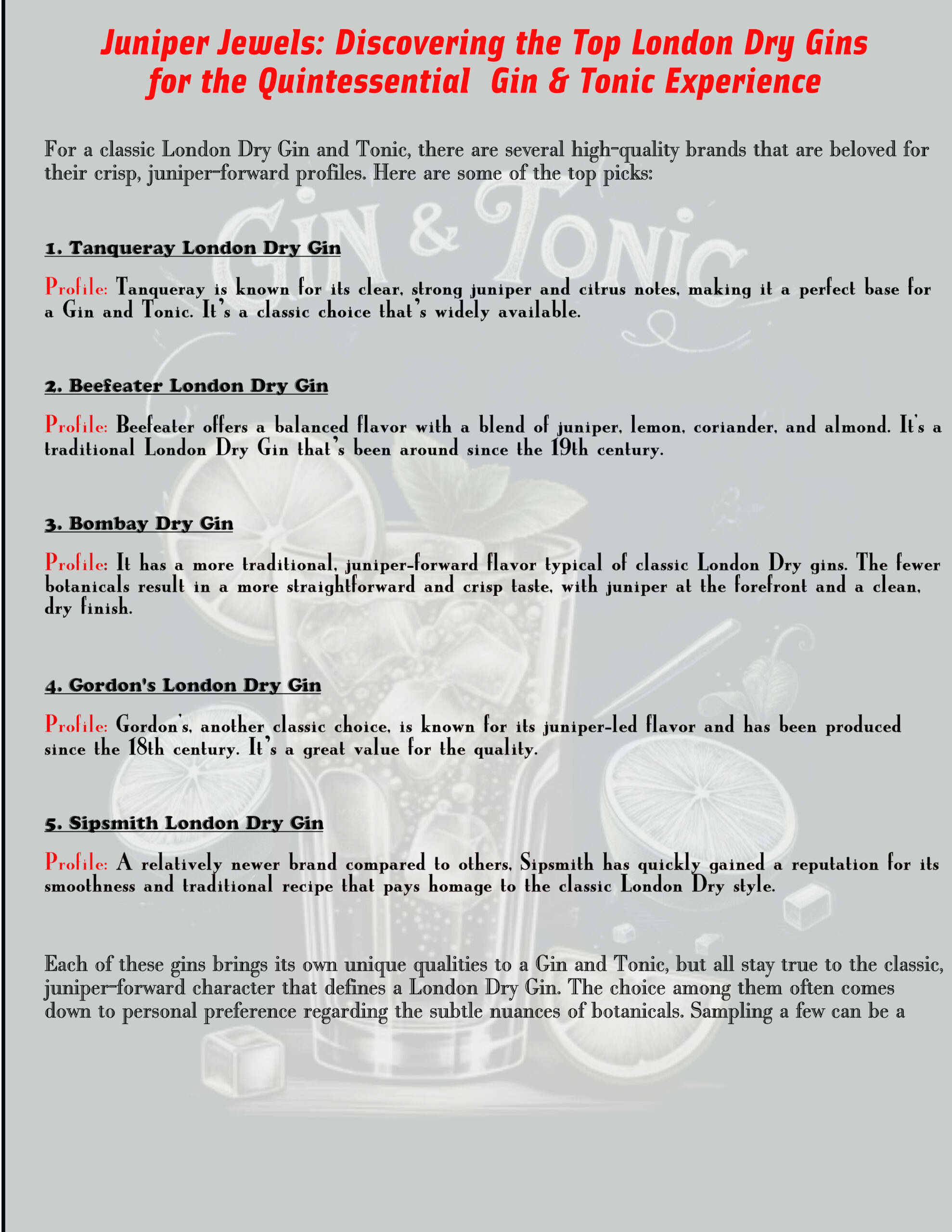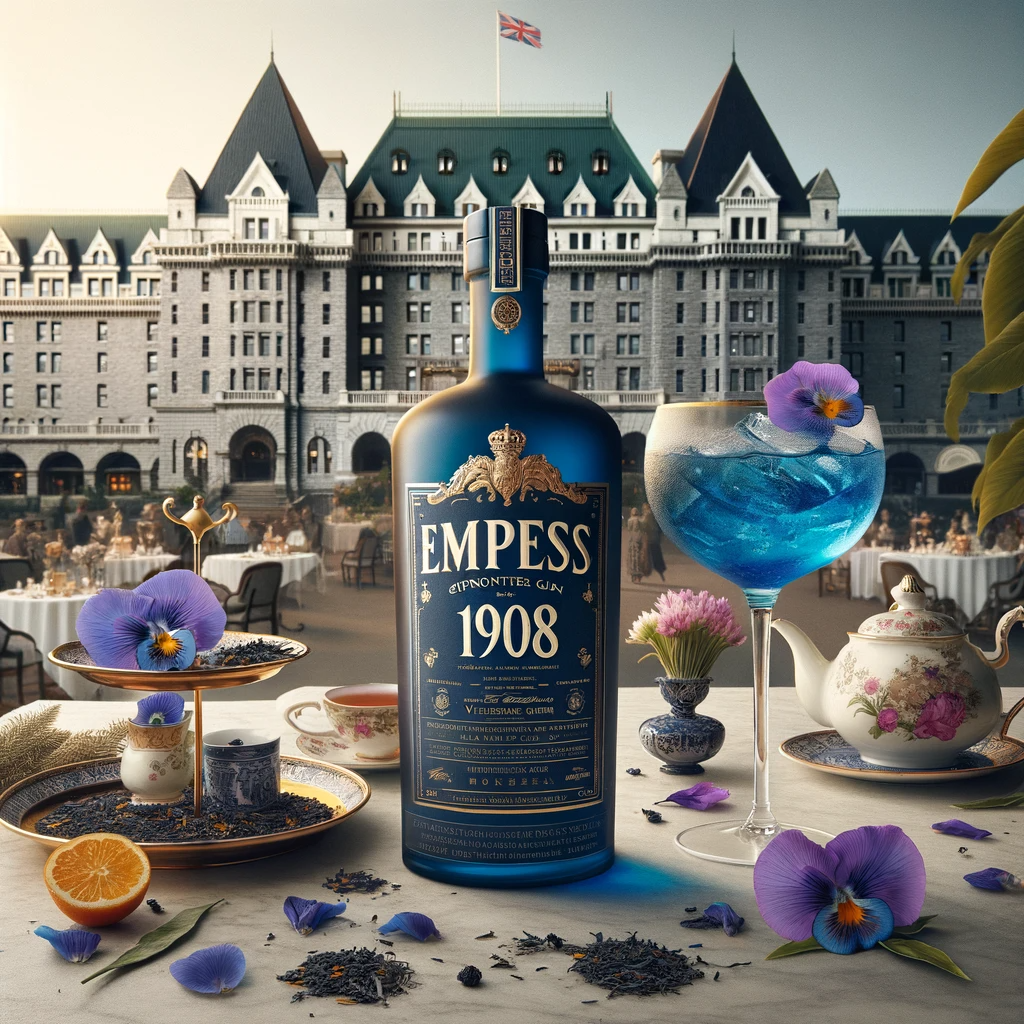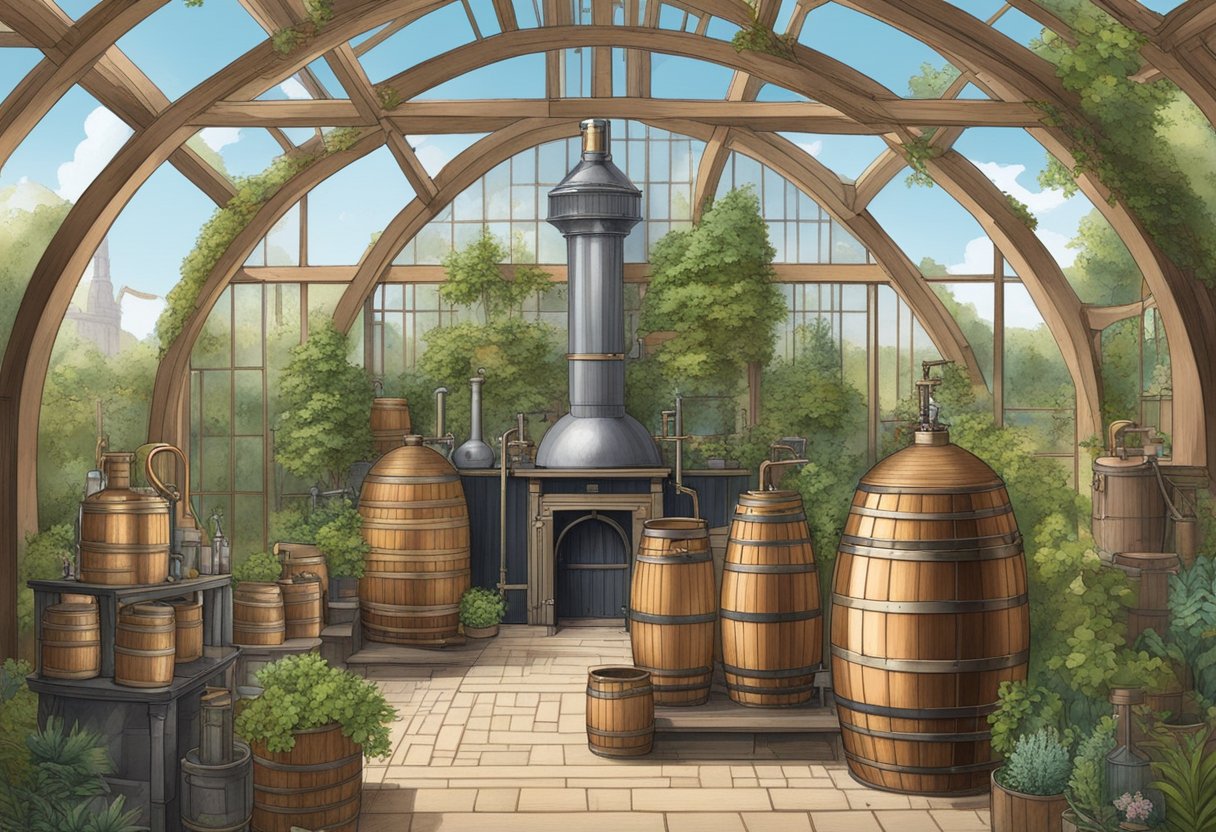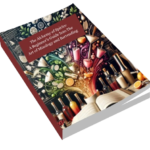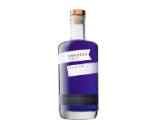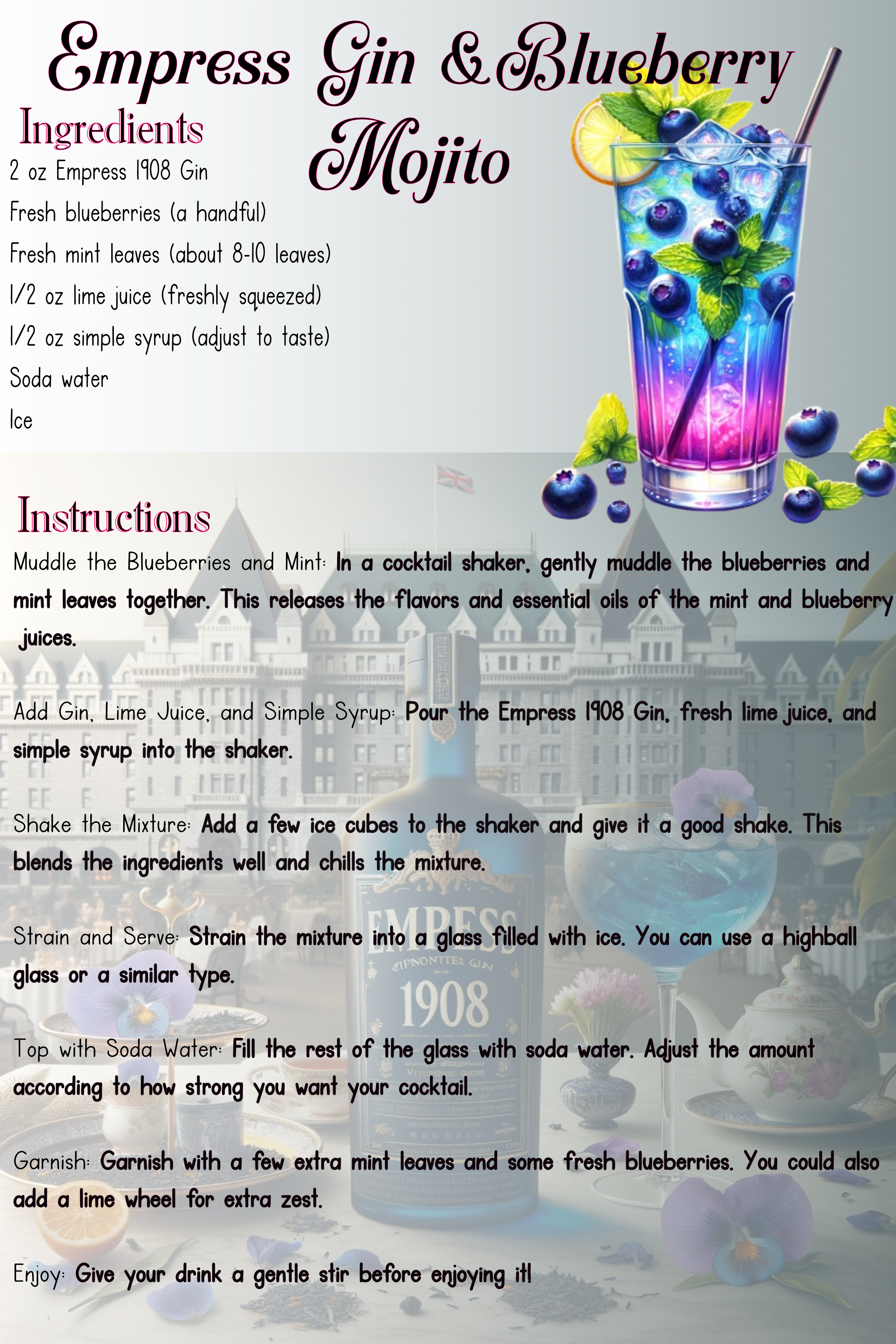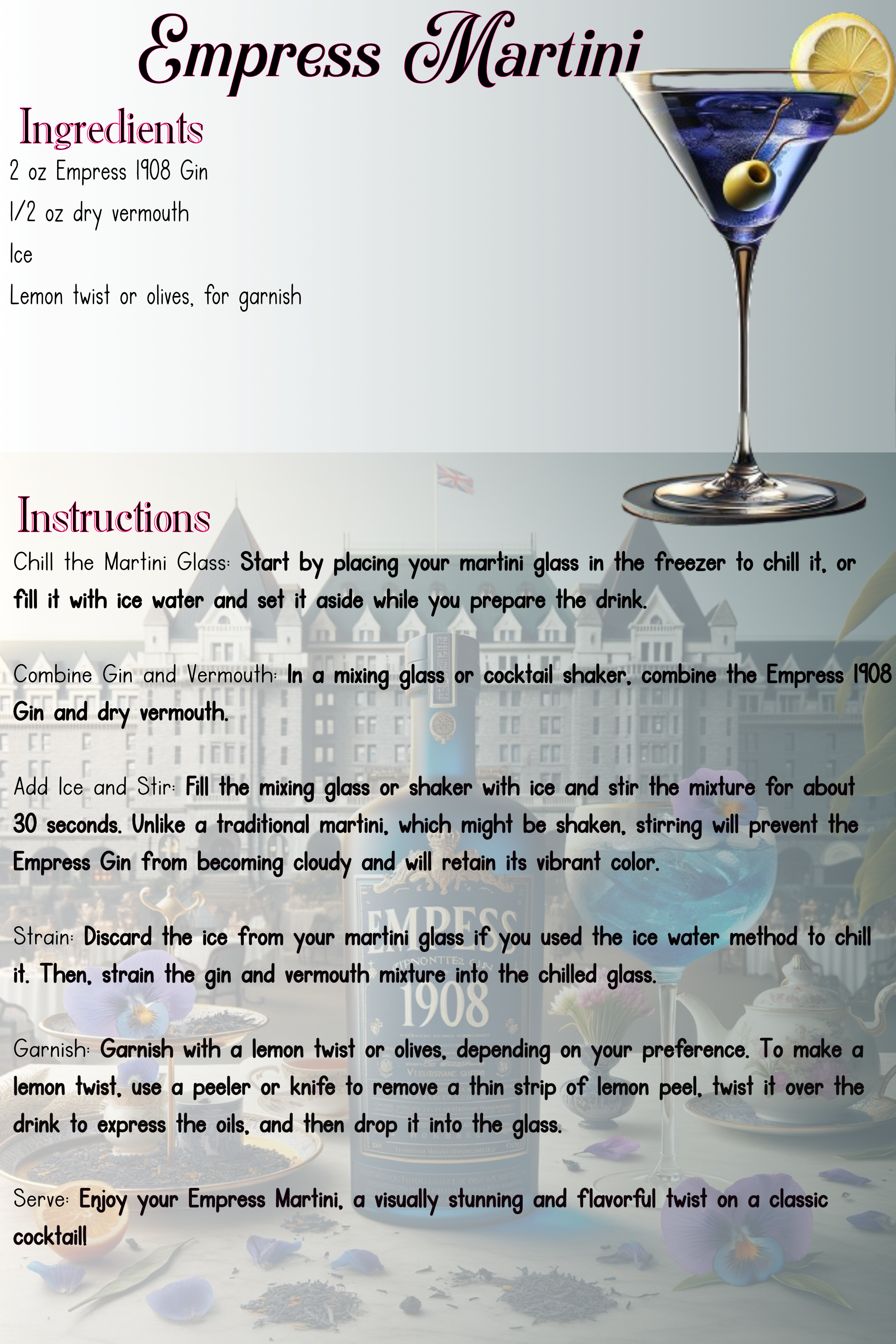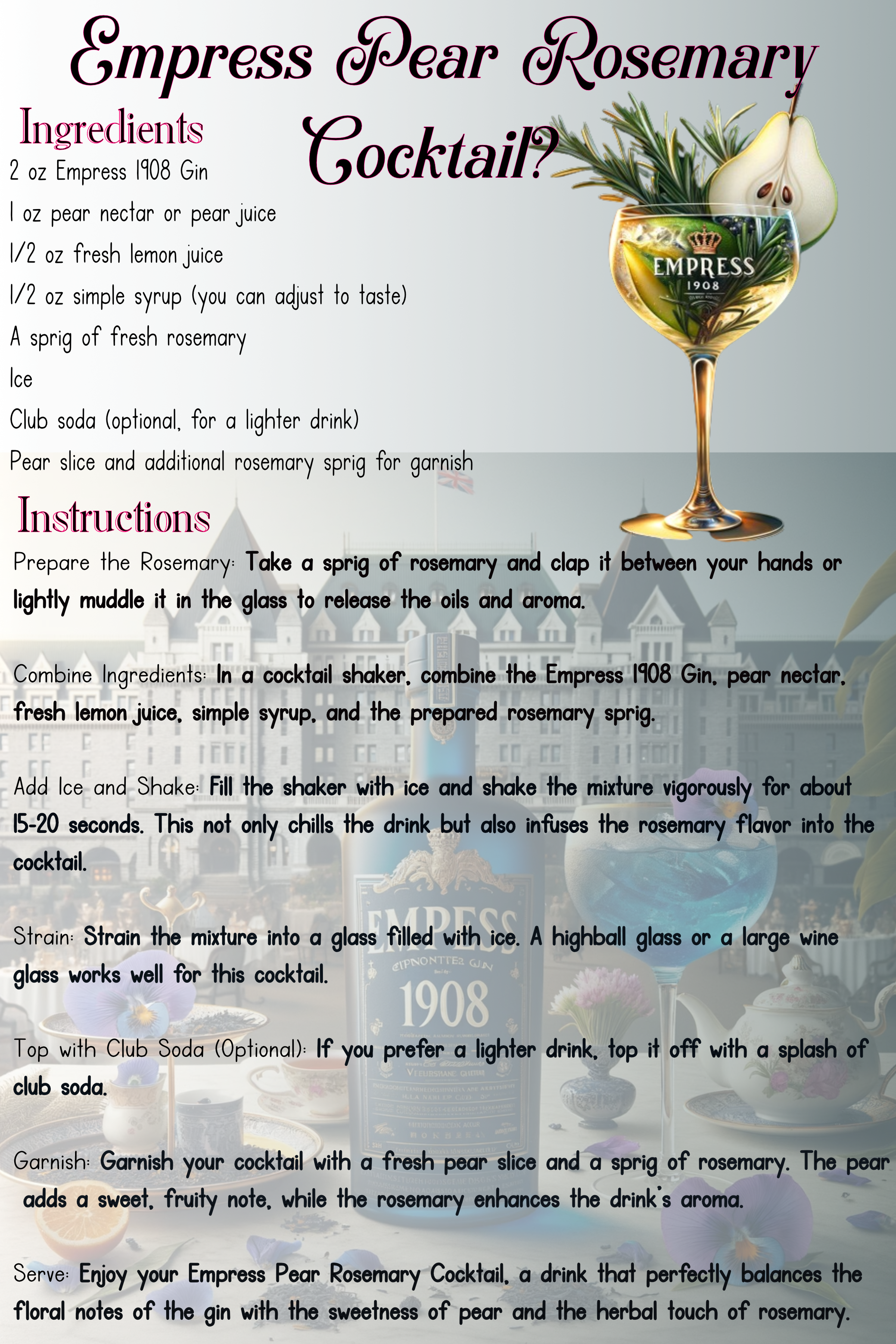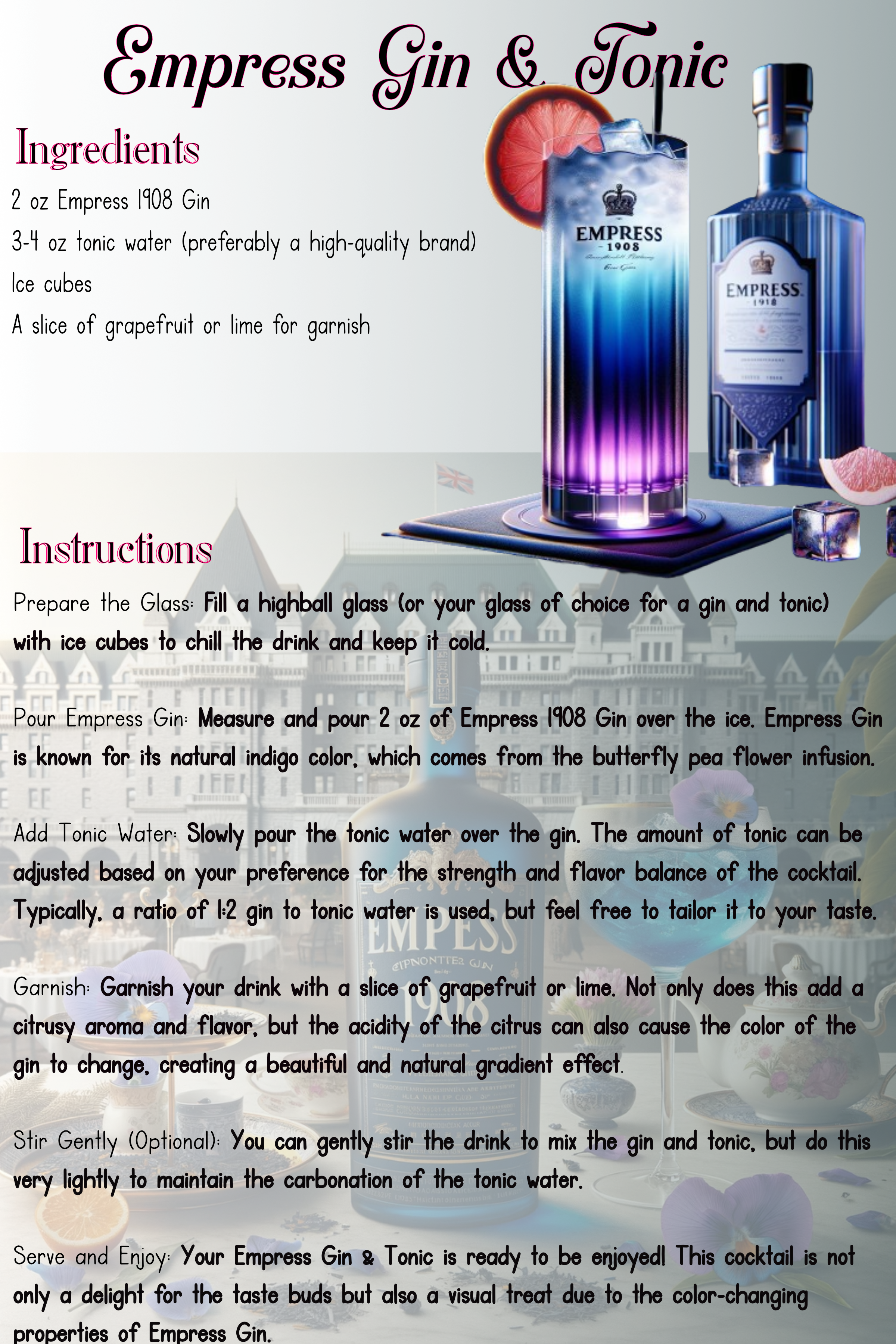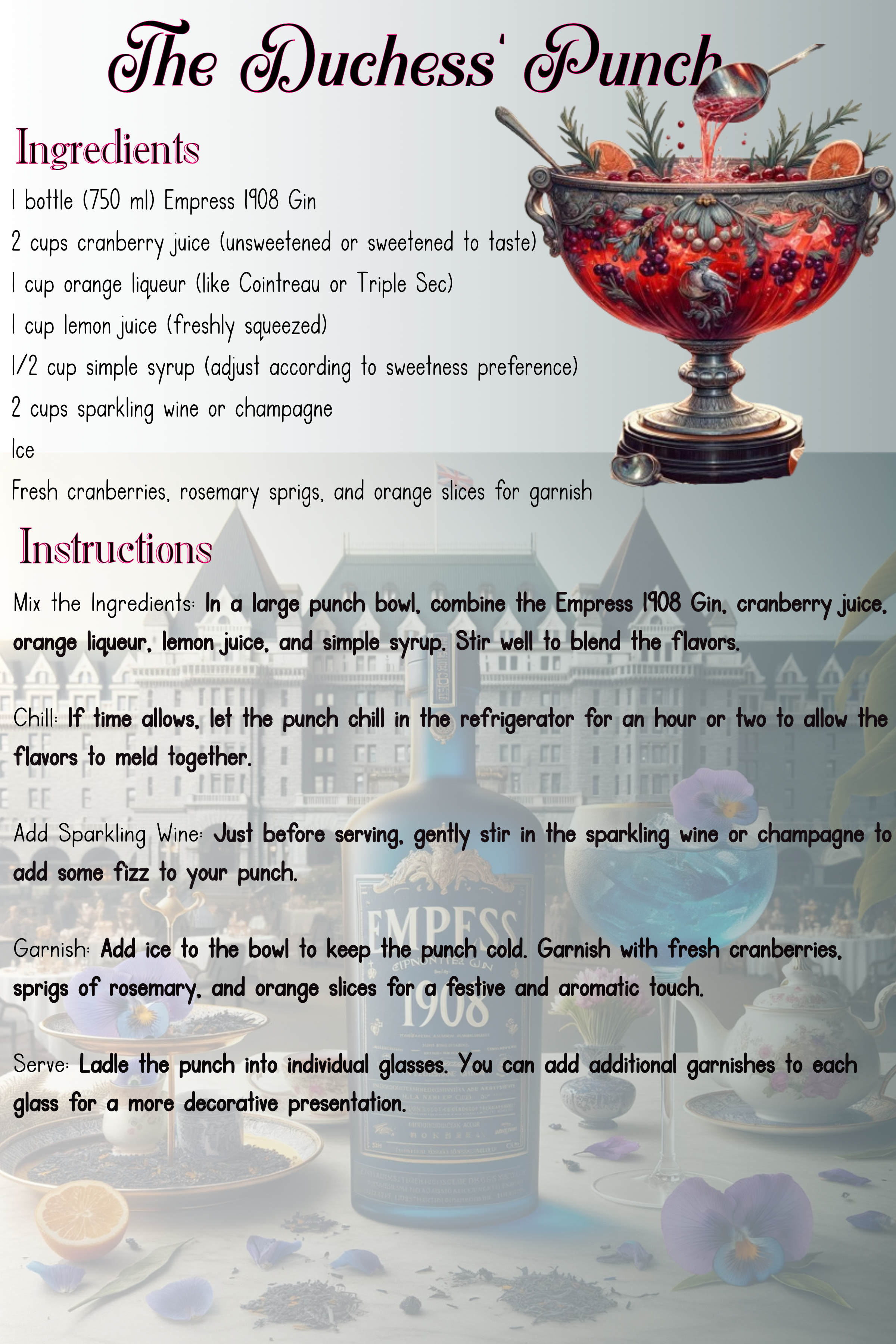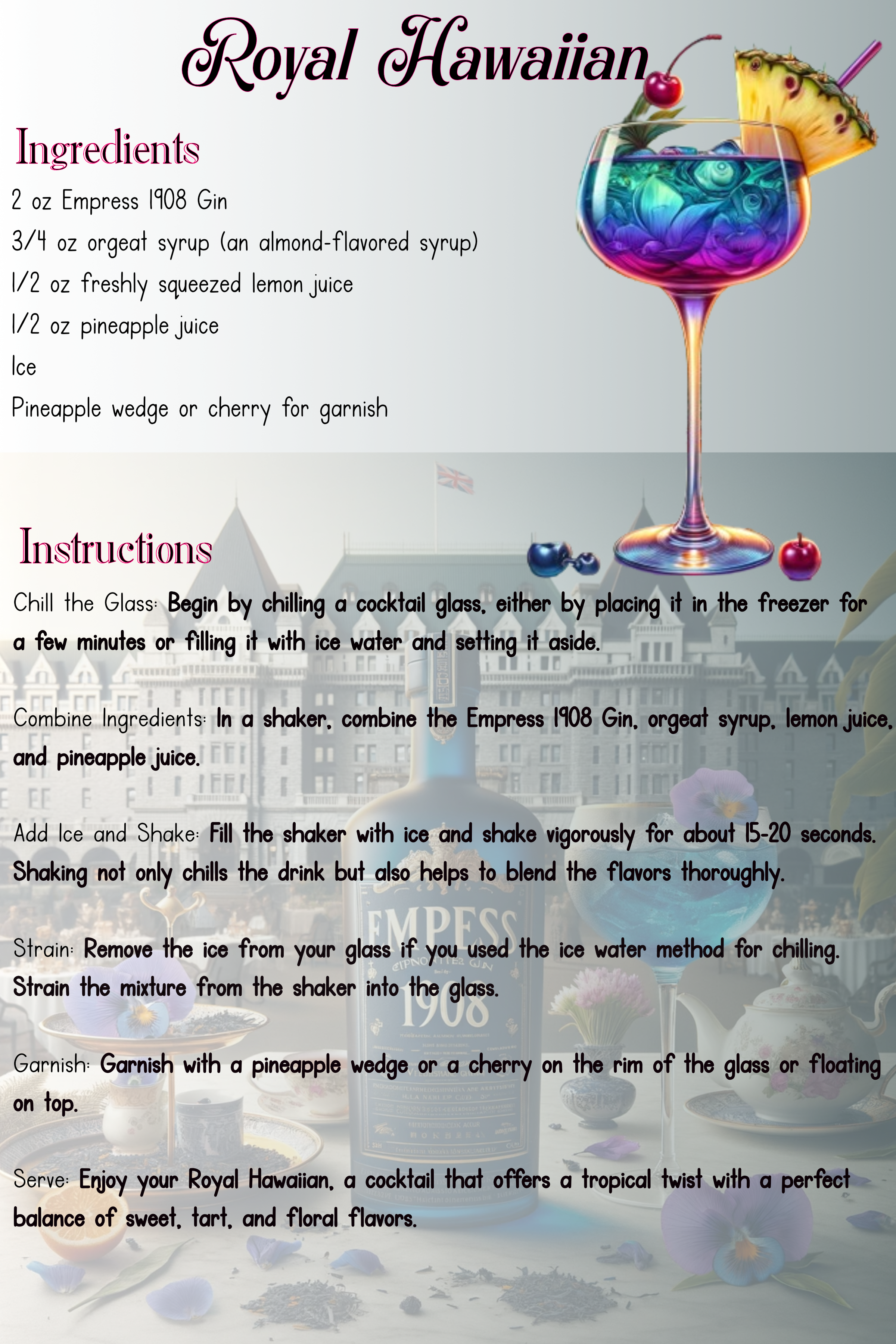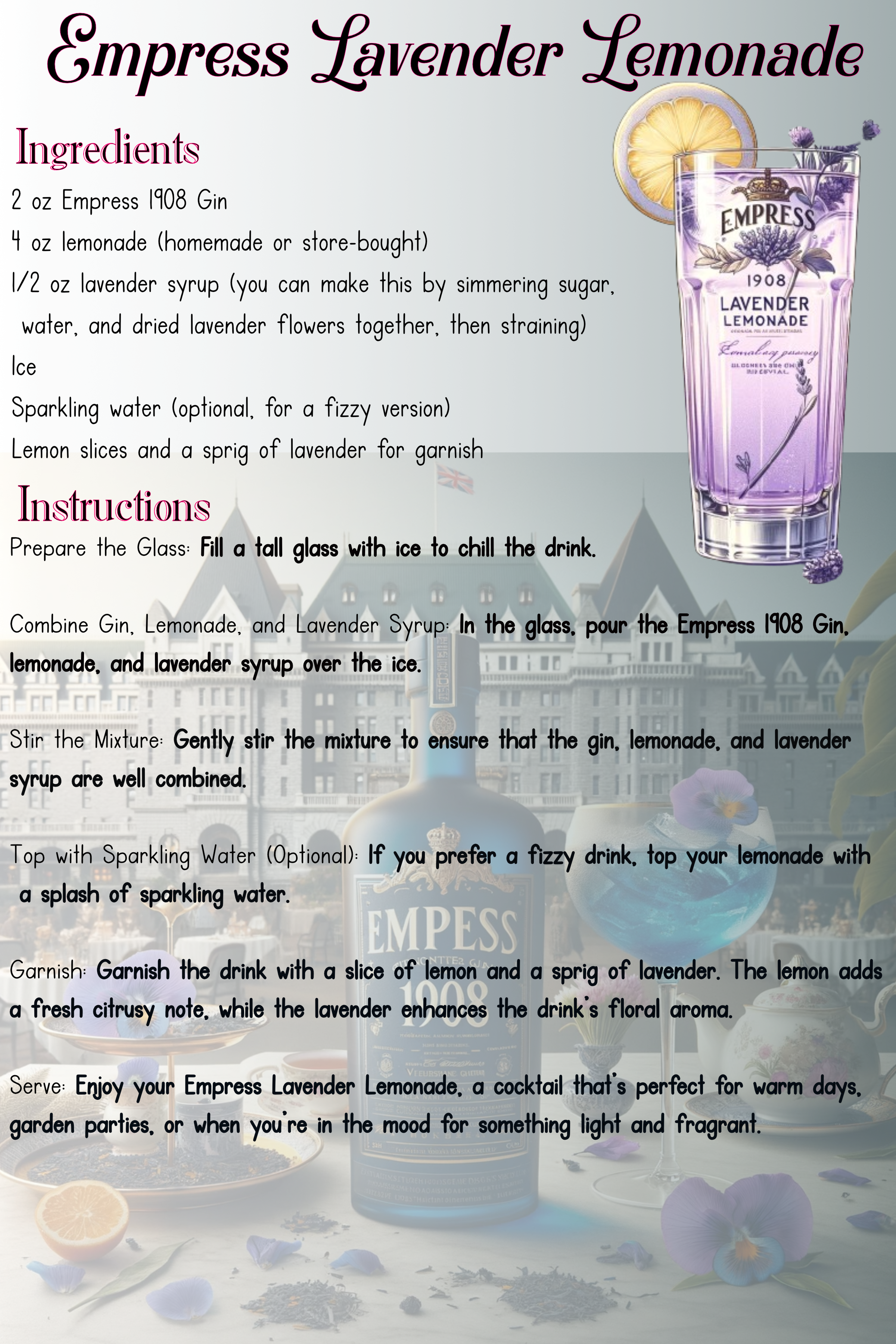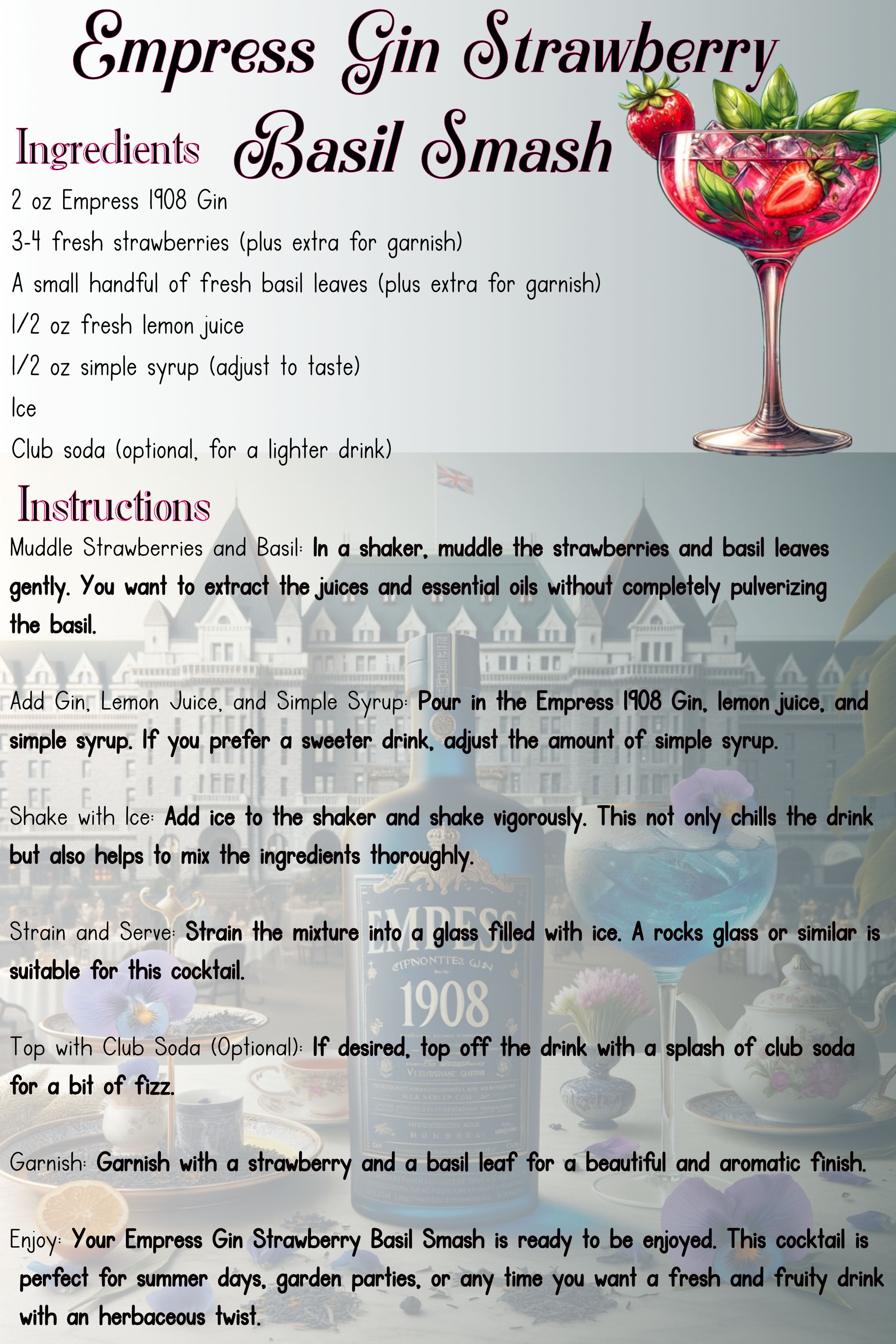Gin
Bombay Sapphire: The Artful Blend of Exotic Botanicals
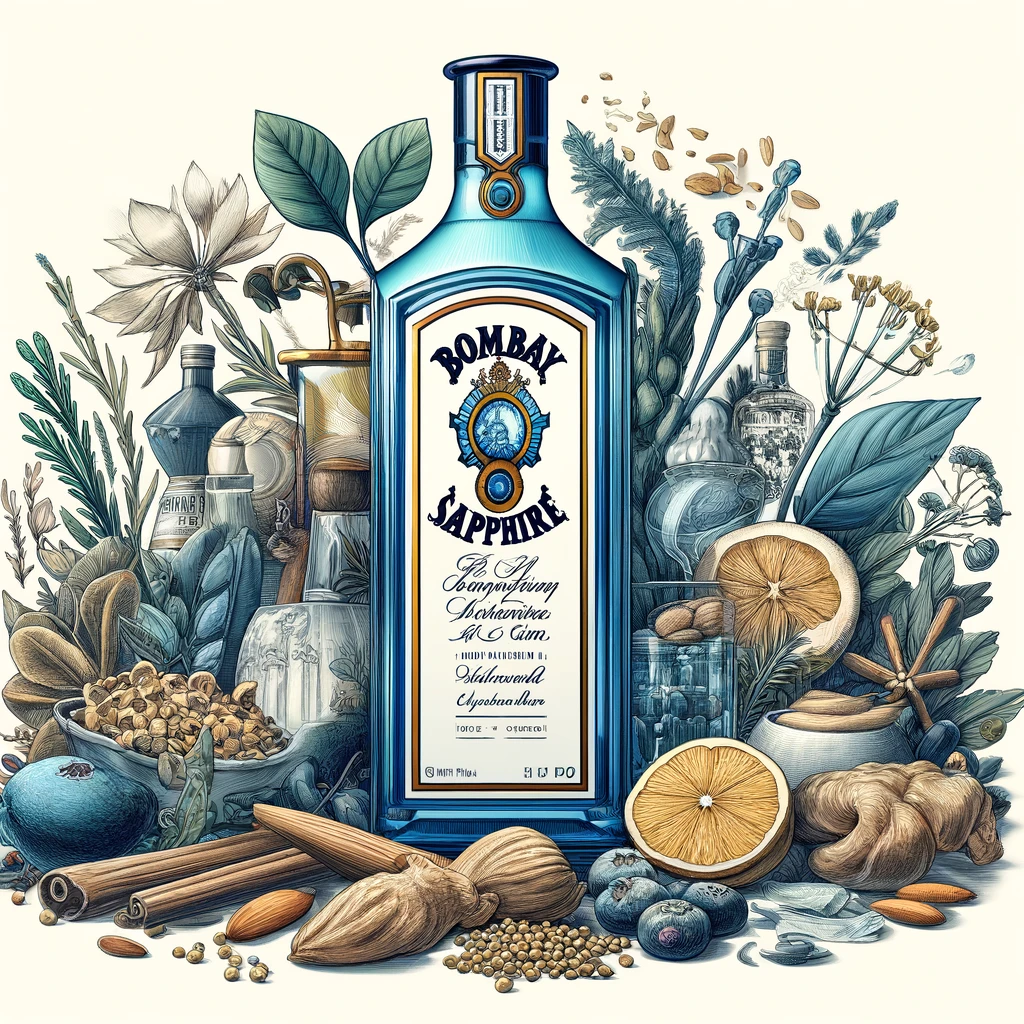
If You want a great tasting, high quality gin? Then remember the name Bombay Sapphire. A leader in the world of gin, it is a blend of 10 botanicals. Juniper, lemon peel, coriander, orris root, almonds, cassia bark, licorice, angelica. The two botanicals that make Bombay Sapphire different than Bombay Dry Gin are cubeb berries and grains of paradise.
This results in a unique flavor that is complexed and refined. Making it a top choice for those who love gin. The Bombay brand has been designed to reflect the craft, innovation, and global influences that have shaped gin’s development from its origins to the present day.
History of Bombay Sapphire
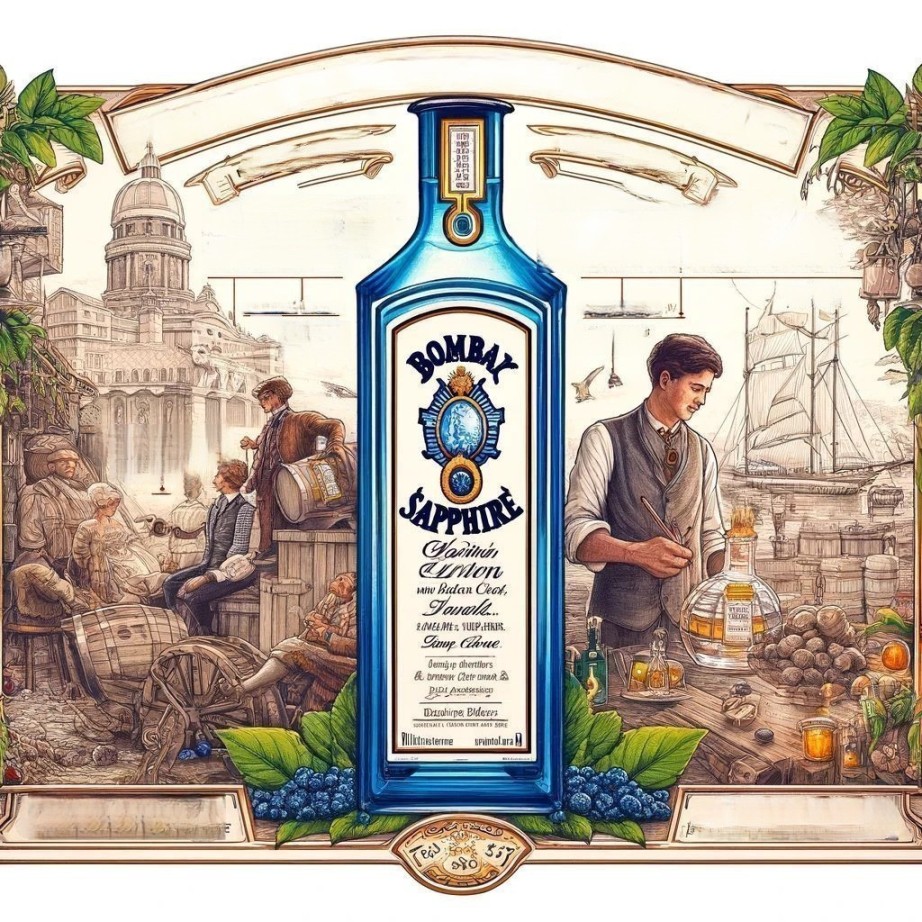
In 1761, a young distiller began distilling Warrington Dry Gin, in Warrington, England. His name was Thomas Dakin and his recipe would form the base for Bombay gins. His recipe for gin included a blend of botanicals. This unique blend included juniper berries, coriander and citrus peel.
Mr. Thomas Dakin passed this recipe down to the next generation. And so, the recipe kept on being passed down through the generations of distillers.
In the early 1830’s he Dakin family developed a vapor infusion process. This unique distillation method captures the delicate flavors of botanicals more effectively.
Bombay Spirits Company
Fast forward to 1960, the Bombay Spirits Company who was owned by English Wine-Merchant IDV introduced. They were the ones launched Bombay Sapphire in 1987. But we are talking 27 years before that. The name “Bombay” is a reference to the popularity of gin in India during the British Raj, though the spirit itself is distilled in England. They introduced Bombay Dry Gin. It is a classic London dry gin, straightforward and crisp taste, with juniper at the forefront and a clean, dry finish. Aiming to replicate the style of gin that was popular in the 18th century.
Below is a reference sheet to download if you would like a list of 5 high-quality brands that are beloved for their crisp, juniper-forward profiles. Click the image to download the PDF.
Then in 1987 Bombay Sapphire Gin was released. The “Sapphire” part of the name refers to the violet-blue Star of Bombay, a 182-carat sapphire that was discovered in Sri Lanka, suggesting luxury and quality. Initially introduced as a premium product offering by the Bombay Spirits Company, Bombay Sapphire’s success, distinct blue bottle, and unique botanical blend helped it to stand out in the gin market, leading it to become a brand in its own right.
Bombay Dry Gin Vs Bombay Sapphire Gin
The difference between Bombay Dry Gin and Bombay Sapphire gin is two botanicals, grains of paradise and cubeb berries. The additional botanicals give Bombay Sapphire a more complex, aromatic, and slightly floral flavor profile, with a smoother finish. The juniper is still present but is balanced with the other botanicals, making it more accessible to those who may not prefer the strong juniper taste of traditional gins.
The vapor infusion distillation is equally important to achieve the harmonious blend of earthy, citrus, and floral notes. Bombay Sapphire quickly gained popularity after its launch in 1987. Bombay Sapphire’s success, distinct blue bottle, and unique botanical blend helped it to stand out in the gin market, leading it to become a brand in its own right.
Despite its relatively recent entry into the gin market, Bombay Sapphire draws on a recipe that dates back to 1761. Aligned to embody the heritage of distillation that has evolved over the centuries.
Bacardi acquired Bombay Spirits Company in 1998 and despite several changes to their marketing and branding strategies. The same recipe that has been passed down through the years is still used today.
Bombay Sapphire The Art of Distillation
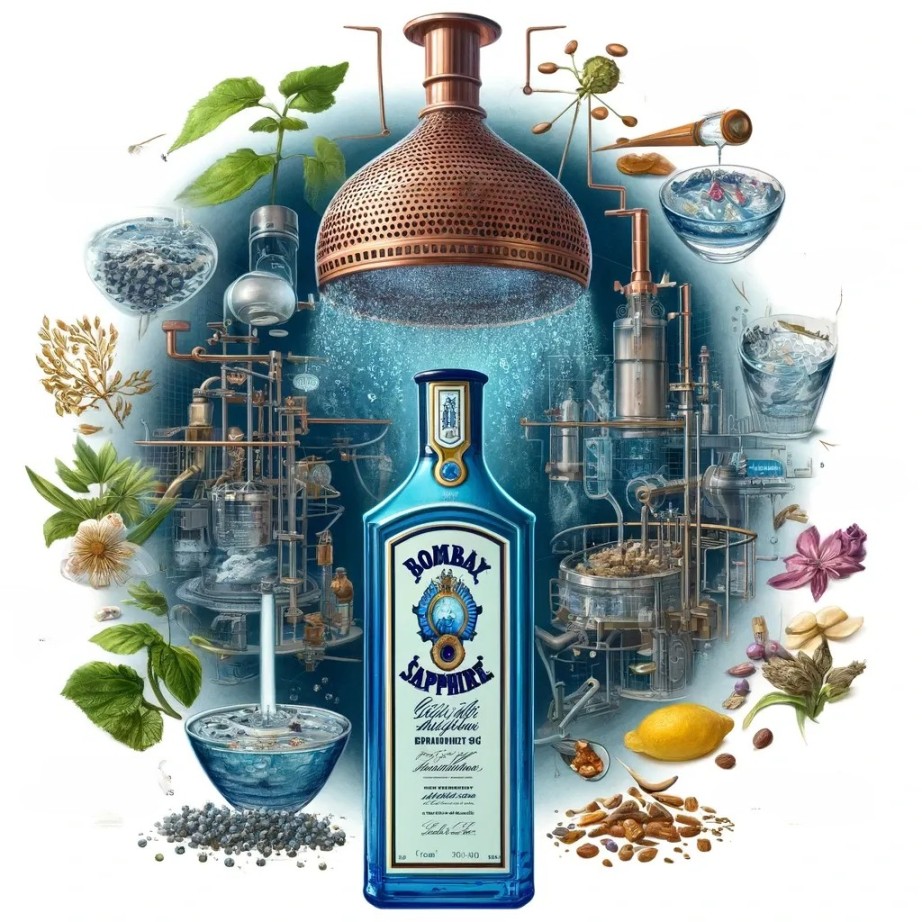
The result of an intricate distillation process called vapor infusion. Bombay Sapphire flavor profile is unique. It’s the heart of gin making. The botanicals are not boiled directly with the spirit, like in traditional methods. Bombay Sapphire’s method Involves passing the spirit through a perforated copper basket containing the botanicals. The botanicals are suspended above the spirit, allowing the vapors to pass through and infuse the gin with their flavors and aromas. Because of the gentle coaxing process, each botanicals essence is caught in its purest form. Leaving a lighter and more sweet-smelling fragrance.
Botanicals
The botanicals used in Bombay Sapphire are carefully selected from all over the world. The ten botanicals used in the recipe are juniper berries, coriander seeds, angelica root, orris root, licorice, cassia bark, cubeb berries, grains of paradise, lemon peel, and almonds. Each botanical is chosen for its unique flavor and aroma, and they are all carefully balanced to create the perfect blend.
Bottling
Once the gin has been distilled and infused with the botanicals, bottling the spirit is up. The Laverstoke Mill distillery located in Hampshire, England is where Bombay Sapphire is bottled. The bottles are made from high-quality glass and showcase the beautiful blue color of the gin. Paying their respects, the label features a portrait of Queen Victoria, because she was the queen of England when Bombay Sapphire was created.
Taste Profile: A Symphony of Flavors
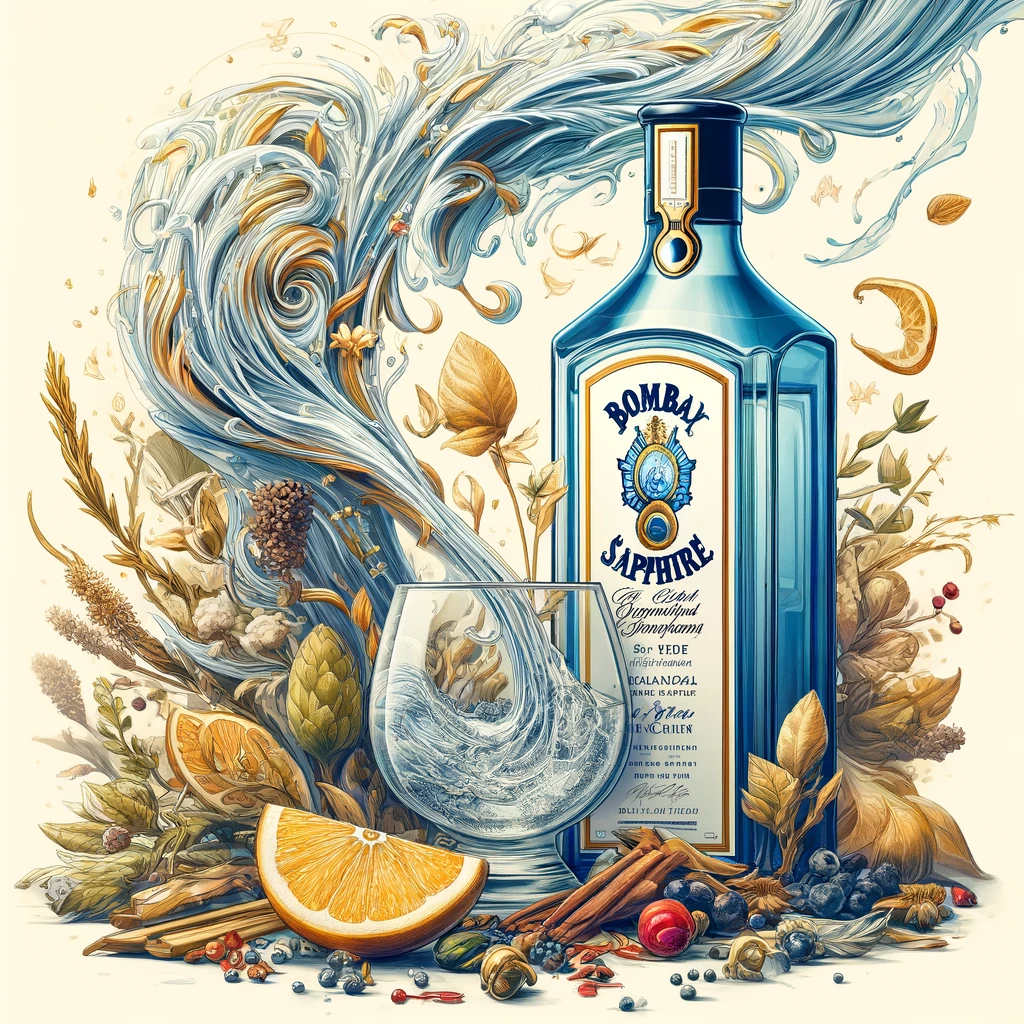
When it comes to taste, Bombay Sapphire is hard to beat. Its unique blend of botanicals gives it a complex flavor profile that’s both refreshing and satisfying. Here’s what you can expect when you take a sip of Bombay Sapphire.
Aroma
Upon opening the bottle, you’ll immediately notice the aroma of juniper and citrus. The scent is refreshing and invigorating, with just a hint of spice in the background. As you pour the gin into a glass, the aroma becomes more pronounced, with the scent of coriander and angelica adding to the complexity.
Flavor
The first thing you’ll notice when you take a sip of Bombay Sapphire is the smoothness of the gin. Unlike some gins that can be harsh or overpowering, Bombay Sapphire goes down easy, with a subtle sweetness that’s balanced by the bitterness of the juniper. The flavor is complex, with the various botanicals working together to create a taste that’s both refreshing and satisfying.
Finish
The finish of Bombay Sapphire is clean and crisp, with a subtle spiciness that lingers on the tongue. The aftertaste is long and satisfying, with the flavors of the botanicals coming through in waves. Overall, the finish is smooth and refreshing, making Bombay Sapphire a great gin for sipping on its own or mixing into your favorite cocktail.
In summary, Bombay Sapphire is a gin with a smooth flavor, clean finish and subtle spiciness. Offering a sophisticated yet accessible taste experience.
Cocktails and Mixology: A Canvas for Creativity
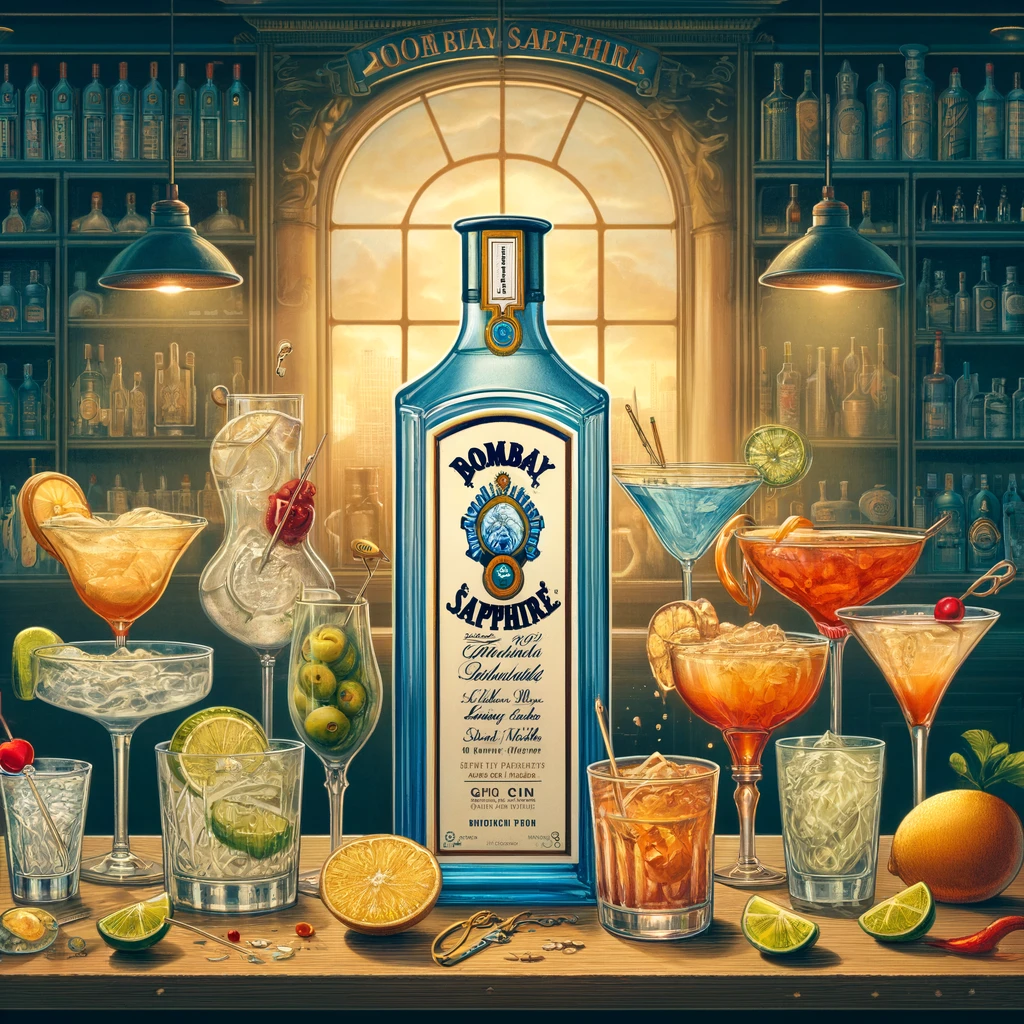
Bombay Sapphire gin serves as the perfect base for classic cocktails such as the Martini. Making a martini is a simple process, but it’s also an art form with many variations tailored to individual preferences. Here’s a classic martini recipe to get you started:
Classic Recipes
The Martini
Ingredients:
- 2 1/2 ounces gin
- 1/2 ounce dry vermouth
- Ice cubes
- Lemon twist or green olive for garnish
Instructions: 
- Chill Your Glass: Start by placing your martini glass in the freezer to chill or fill it with ice water and set it aside while you prepare the drink.
- Mix Your Drink: In a mixing glass, combine Bombay Sapphire gin with the dry vermouth. Add plenty of ice cubes.
- Stir or Shake: If your crafting traditional, stir the mixture gently for about 30 seconds. It’s going to preserve the clarity and texture of the gin. If you want your martini a bit more chilled and aerated, place the mixture in a shaker and shake for 10 seconds.
- Prepare Your Garnish: If you’re using a lemon twist, use a vegetable peeler or a knife to cut a thin strip of lemon peel. Twist it over the glass to release the oils, then drop it into the drink. If you prefer olives, simply skewer one or two on a cocktail stick.
- Serve: Discard the ice water from your martini glass if you were chilling it this way. Strain the mixed drink into your chilled glass.
- Garnish and Enjoy: Add your garnish to the drink. Serve immediately.
Variations:
- Dry Martini: Use less vermouth; a ratio of 5:1 or even 6:1 gin to vermouth is common.
- Dirty Martini: Add a splash of olive brine to the mix and garnish with an olive.
- Vesper: James Bond style, a mix of gin, vodka, and Lillet blanc instead of vermouth.
Remember, the key to a great martini is to adjust the ingredients to suit your taste.
Another classic is the Gin and Tonic. It’s a very popular cocktail. It could be because it’s very refreshing. Making a Gin and Tonic is straightforward, here’s a classic way to make one:
The Gin and Tonic
Ingredients:
- 2 ounces Bombay Sapphire gin
- 4 to 6 ounces tonic water
- Ice cubes
- Lime wedge for garnish
Instructions:
- Prepare Your Glass: Fill a highball glass with ice cubes. The more ice you use, the slower it will melt, keeping your drink cool and less diluted.
- Add Gin: Pour the gin over the ice.
- Add Tonic Water: Slowly add the tonic water to the glass. The ratio of gin to tonic can be adjusted according to your personal preference, but a classic ratio is 1 part gin to 2-3 parts tonic.
- Garnish and Serve: Gently stir the drink to mix the gin and tonic. Then, squeeze a lime wedge over the drink to add a bit of citrus acidity and drop it into the glass as garnish.
- Enjoy: Serve immediately and enjoy the refreshing taste.
Tips: 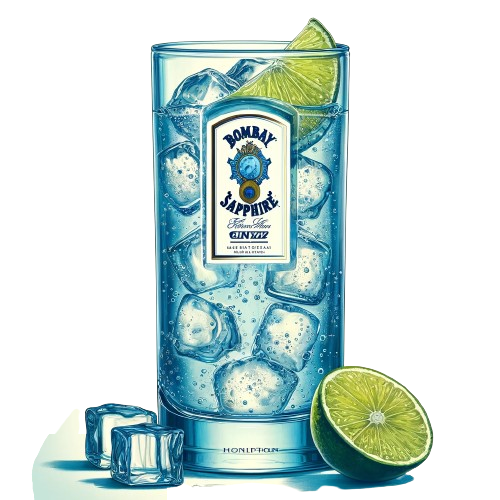
- Choosing Your Gin: The choice of gin for this write up is Bombay Sapphire. The unique botanicals is a modern style. However, you may prefer a gin and tonic that uses classic London dry gin. Each one will bring it’s own character to your Gin and Tonic.
- Tonic Water: The quality and flavor of the tonic water also play a significant role. There are many tonic waters on the market, ranging from classic to artisanal ones that include various flavors and levels of sweetness.
- Experiment with Garnishes: While lime is traditional, you can also try other garnishes like lemon, cucumber, or even a sprig of rosemary or thyme to add a different twist to your drink.
A Gin and Tonic is versatile and can be as simple or as complex as you like, making it perfect for experimentation.
Another classic cocktail that fits perfectly with Bombay Sapphire gin is the Negroni. The Negroni is a classic Italian cocktail, known for its simple yet perfectly balanced blend of bitterness, sweetness, and aromatic botanicals. Another straightforward drink to craft with equal parts of gin, sweet vermouth, and Campari To make this delicious drink:
Negroni
Ingredients:
- 1 ounce gin
- 1 ounce Campari
- 1 ounce sweet vermouth
- Ice cubes
- Orange peel or slice, for garnish
Instructions: 
- Combine Ingredients: In a mixing glass, combine the gin, Campari, and sweet vermouth. These are the core ingredients that give the Negroni its distinctive flavor profile.
- Stir: Add ice to the mixing glass. Stir the mixture well for about 30 seconds to chill the ingredients and slightly dilute the drink, which helps to meld the flavors together.
- Prepare the Glass: Some prefer to serve a Negroni on the rocks in an old-fashioned glass, while others enjoy it straight up in a chilled cocktail glass. If serving on the rocks, fill an old-fashioned glass with ice cubes.
- Strain and Serve: Strain the stirred cocktail into your prepared glass. Whether you’re serving it on the rocks or straight up, straining ensures a smooth drinking experience.
- Garnish: Garnish with an orange peel or a slice of orange. To express the essential oils, twist the peel over the drink and rub it around the rim of the glass before dropping it in.
- Enjoy: Your Negroni is ready to enjoy! This cocktail is known for its perfect balance of flavors: the bitterness of Campari, the sweet complexity of the vermouth, and the botanicals from the gin.
Tips:
- Adjust to Taste: While the classic Negroni recipe calls for equal parts of each ingredient, feel free to adjust the ratios according to your personal taste. Some may prefer a bit more gin for a stronger botanical presence or adjust the Campari and vermouth ratios for a sweeter or more bitter profile.
- Vermouth Quality: Because vermouth is a fortified wine, it can oxidize over time. Ensure your vermouth is fresh for the best taste.
The Gin Fizz
Ingredients:
- 2 oz Gin
- 1 oz Fresh lemon juice
- 3/4 oz Simple syrup (You can make this by dissolving equal parts of sugar and water over heat)
- Club soda
- Ice
- Lemon slice or a cherry for garnish (optional)
Instructions: 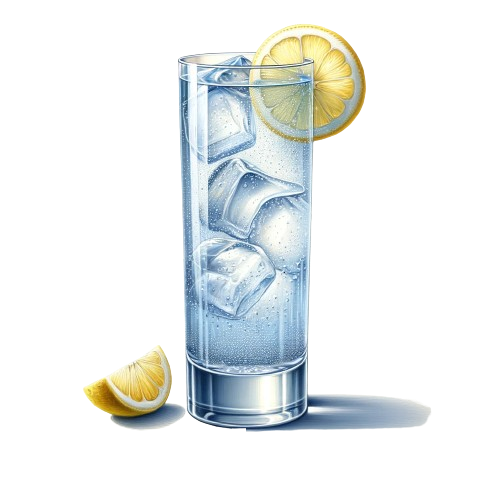
- Chill the Glass: Begin by chilling a highball glass in the freezer. This step is optional but recommended for a cooler drink.
- Mix the Ingredients: In a shaker, combine the gin, fresh lemon juice, and simple syrup. Add a generous amount of ice to the shaker.
- Shake: Shake the mixture vigorously for about 15 seconds. The goal is to chill the liquid ingredients thoroughly and to introduce a little air into the mix, making the drink more refreshing.
- Prepare the Glass: Take the highball glass out of the freezer and fill it about halfway with fresh ice cubes.
- Strain: Strain the shaken mixture into the prepared highball glass. Make sure to leave enough room at the top for the club soda.
- Top with Club Soda: Carefully top the drink with club soda. The amount will depend on the size of your glass and your preference for fizziness. Aim for about 2 to 3 oz.
- Garnish and Serve: Gently stir to mix the club soda with the rest of the drink. Garnish with a slice of lemon or a cherry on the rim of the glass or floated on top.
- Enjoy: Serve immediately and enjoy your homemade Gin Fizz.
The Gin Fizz is all about balancing the tartness of the lemon with the sweetness of the syrup, all while enjoying the botanicals in the gin. It’s a classic cocktail that’s easy to make and always enjoyable.
The Aviation
The Aviation has a unique color with a subtle floral note. This delightful cocktail is a classic that dates back to the early 20th century.
Ingredients:
- 2 ounces gin
- 1/2-ounce maraschino liqueur
- 1/4-ounce crème de violette (optional for color and a slight floral taste)
- 3/4-ounce fresh lemon juice
- Cherry or lemon twist, for garnish
Instructions:
- Chill Your Glass: Start by placing your cocktail glass in the freezer to chill or fill it with ice water and set it aside while you prepare the drink.
- Combine Ingredients: In a cocktail shaker, combine the gin, maraschino liqueur, crème de violette (if using), and fresh lemon juice. The crème de violette is optional because it was omitted in some early recipes, but it adds color and a unique flavor to the drink.
- Shake: Add ice to the shaker. Shake the ingredients vigorously for about 10-15 seconds. Shaking not only chills the drink but also dilutes it slightly, balancing the strength of the alcohol with the other flavors.
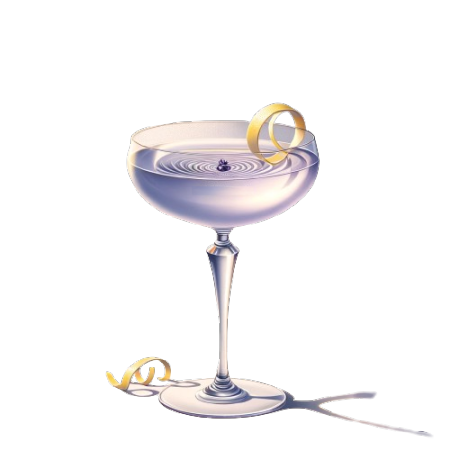
- Strain and Serve: Strain the mixture into your chilled cocktail glass. A fine mesh strainer can be used to ensure a smooth drink, free of ice shards.
- Garnish: Garnish with a cherry or a lemon twist. The cherry adds a touch of sweetness and color, while the lemon twist contributes a bright citrus aroma.
- Enjoy: Your Aviation is ready to enjoy! This cocktail offers a balance of botanical, floral, and citrus flavors, making it a unique and sophisticated choice.
Tips:
- Gin Selection: The choice of gin can affect the taste of your Aviation. A classic London Dry Gin works well, but feel free to experiment with different types to see how they influence the drink.
- Crème de Violette Availability: Crème de violette can sometimes be hard to find, depending on where you live. It’s a key ingredient for achieving the Aviation’s signature color and flavor, but the cocktail can still be delicious without it.
- Adjust to Taste: Feel free to adjust the proportions of the ingredients based on your taste preferences. Some might prefer more lemon juice for acidity or more maraschino liqueur for sweetness.
Modern Twists
If you want a more unique twist, try this recipe:
The Bombay Sapphire Sour
Ingredients:
- 2 ounces Bombay Sapphire Gin
- 3/4-ounce fresh lemon juice
- 1/2-ounce simple syrup (adjust to taste)
- Egg white from one small egg (optional, for frothiness)
- Ice cubes
- A dash of bitters (optional, for garnish)
- Lemon peel or cherry for garnish
Instructions:
- Combine Ingredients: If you’re using an egg white, start by adding it to a cocktail shaker. Add the Bombay Sapphire Gin, fresh lemon juice, and simple syrup into the shaker.
- Dry Shake (If Using Egg White): If you included an egg white, shake the ingredients without ice first. This is called a dry shake and helps to emulsify the egg white, creating a smooth, frothy texture.
- Add Ice and Shake Again: After the dry shake, add a handful of ice to the shaker and shake again vigorously. This second shake chills the drink and further aerates the egg white, adding more frothiness to the cocktail.
- Strain and Serve: Strain the cocktail into a chilled glass. A coupe glass is traditionally used for sours, but you can use any small to medium-sized glass.
- Garnish: Add a dash of bitters on top of the foam if desired. This is not only decorative but adds a hint of flavor. Garnish with a lemon peel or a cherry.
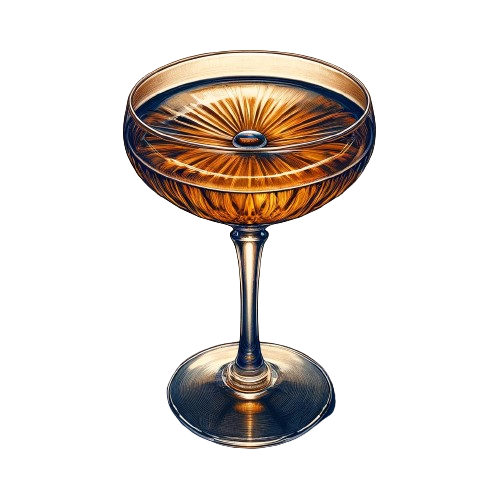
- Enjoy: Your Bombay Sapphire Sour is ready to be enjoyed!
Tips:
- Adjust Sweetness and Sourness: The balance of sweetness and sourness in a sour cocktail is key. Feel free to adjust the amounts of lemon juice and simple syrup according to your taste.
- Simple Syrup: You can easily make simple syrup at home by mixing equal parts sugar and water and heating them until the sugar dissolves. Allow the syrup to cool before using it in your cocktail.
- Egg White Safety: If you’re concerned about using raw egg white, you can purchase pasteurized egg whites from most grocery stores. They provide the same frothiness without the risk of salmonella.
- Vegan Alternative: For a vegan version of this cocktail, you can use aquafaba (the liquid from a can of chickpeas) as a substitute for the egg white. About 1 ounce of aquafaba will replicate the frothiness quite well.
A delightful variation on the classic sour cocktail, showcasing the botanical flavors of Bombay Sapphire Gin. An elegant and refreshing cocktail that has a beautiful balance of botanical gin flavors, tartness, and sweetness.
Bombay Sapphire is versatile, yet its complex flavor profile has inspired innovative creations like the refreshing zest of a Sapphire Collins. The Sapphire Collins is a refreshing twist on the classic Tom Collins cocktail, utilizing Bombay Sapphire Gin to lend it a distinctive, aromatic profile. Here’s how to make it:
Sapphire Collins
Ingredients:
- 2 ounces Bombay Sapphire Gin
- 1 ounce freshly squeezed lemon juice
- 1/2 ounce simple syrup (adjust to taste)
- Club soda to top off
- Ice cubes
- Lemon wheel or wedge for garnish
- Optional: A cherry or a sprig of mint for additional garnish
Instructions:
- Combine Gin, Lemon Juice, and Simple Syrup: In a shaker filled with ice, combine the Bombay Sapphire Gin, freshly squeezed lemon juice, and simple syrup. The simple syrup can be adjusted based on how sweet you like your drink.
- Shake: Shake the mixture vigorously until well chilled. This usually takes about 15 seconds.
- Strain into a Glass: Strain the mixture into a tall Collins glass filled with fresh ice. This ensures your drink is cool and refreshing.
- Top with Club Soda: Gently top off the glass with club soda. The amount can vary depending on the size of your glass and your personal preference, but you’ll want to leave enough room to mix without overflowing.
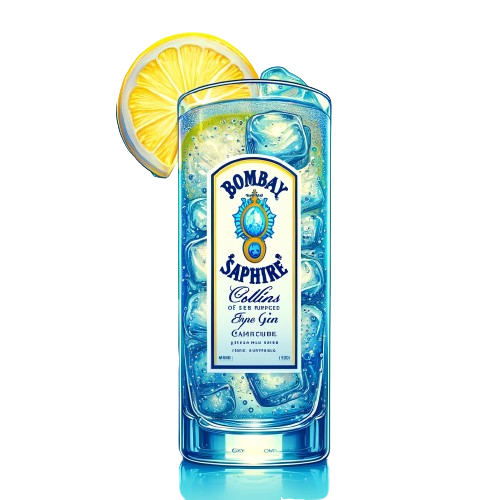
- Garnish and Serve: Garnish with a lemon wheel or wedge, and optionally, you can add a cherry or a sprig of mint for a touch of extra flavor and color.
- Enjoy: Stir gently before enjoying, to mix all the flavors together.
Tips:
- Adjusting Sweetness: The balance of sweetness and tartness is key to a good Sapphire Collins. Don’t hesitate to adjust the amount of simple syrup and lemon juice to find your perfect balance.
- Simple Syrup: If you don’t have simple syrup, you can easily make it by dissolving equal parts sugar and water in a pan over low heat and then cooling the mixture.
- High-Quality Ingredients: Since this cocktail has relatively few ingredients, using high-quality gin and fresh lemon juice makes a significant difference in the final taste.
This cocktail is perfect for summer days or whenever you’re in the mood for something refreshing and lightly sweet with a gin-forward flavor.
Or how about the exotic allure of a…
Laverstoke
Ingredients:
- 1 1/2 ounces Bombay Sapphire Gin
- 1/2 ounce elderflower liqueur (like St-Germain)
- 3/4 ounce freshly squeezed lime juice
- 2 ounces ginger ale
- Fresh mint leaves
- Lime wheel for garnish
- Ice cubes
Instructions: 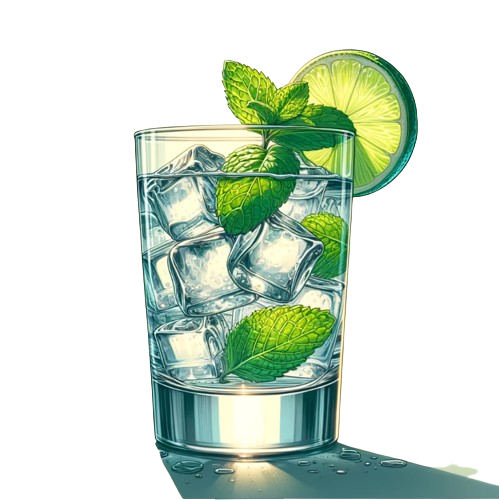
- Muddle Mint Leaves: In a tall glass, gently muddle a few mint leaves to release their oils. This adds a fresh, aromatic base to the cocktail.
- Combine Gin, Elderflower Liqueur, and Lime Juice: Add the Bombay Sapphire Gin, elderflower liqueur, and freshly squeezed lime juice to the glass.
- Fill with Ice: Fill a highball glass with ice cubes, leaving enough room for the ginger ale.
- Top with Ginger Ale: Gently pour the ginger ale over the ice to top off the drink. Ginger ale adds a sweet and spicy effervescence that complements the botanicals in the gin and the floral notes of the elderflower liqueur.
- Garnish: Garnish with a sprig of fresh mint and a lime wheel. The mint adds a refreshing aroma with each sip, while the lime wheel provides a colorful and zesty accent.
- Stir and Serve: Give the cocktail a gentle stir to combine the flavors, then serve immediately.
Tips:
- Adjust to Taste: Feel free to adjust the proportions of the ingredients to suit your taste. Some might prefer a bit more elderflower liqueur for sweetness or more lime juice for tartness.
- Quality Ingredients: The quality of the ingredients is crucial for a cocktail like the Laverstoke. Using fresh lime juice and high-quality elderflower liqueur can make a big difference in the flavor profile.
- Serving Suggestion: The Laverstoke is best served in a highball glass to accommodate the volume of the drink and the ice, ensuring it stays cool and refreshing.
The Laverstoke is a refreshing and sophisticated cocktail that showcases the unique botanicals of Bombay Sapphire Gin. Named after the Laverstoke Mill in Hampshire, England, where Bombay Sapphire Gin is distilled, this cocktail is a delightful mix of gin, elderflower liqueur, lime juice, and ginger ale, garnished with fresh mint and lime for a vibrant drink.
If you can appreciate the intricacies of gin’s botanicals and enjoy a balance of floral, citrus, and spicy flavors, this is your drink. It’s ideal for sipping on a warm day or serving at a sophisticated gathering.
Bombay Sapphire gin is an excellent choice if you are looking to elevate your mixology game. Adding a hint of sophistication to your cocktail recipes. With its unique blend of hand-selected exotic botanicals, you’ll find a harmonious balance of floral, citrus, and spice.
It doesn’t matter what your taste is, Bombay Sapphire gin is the perfect base for a wide variety of cocktails. Either the classics or modern twist recipes, you are sure to find the perfect drink to suit your mood and taste.
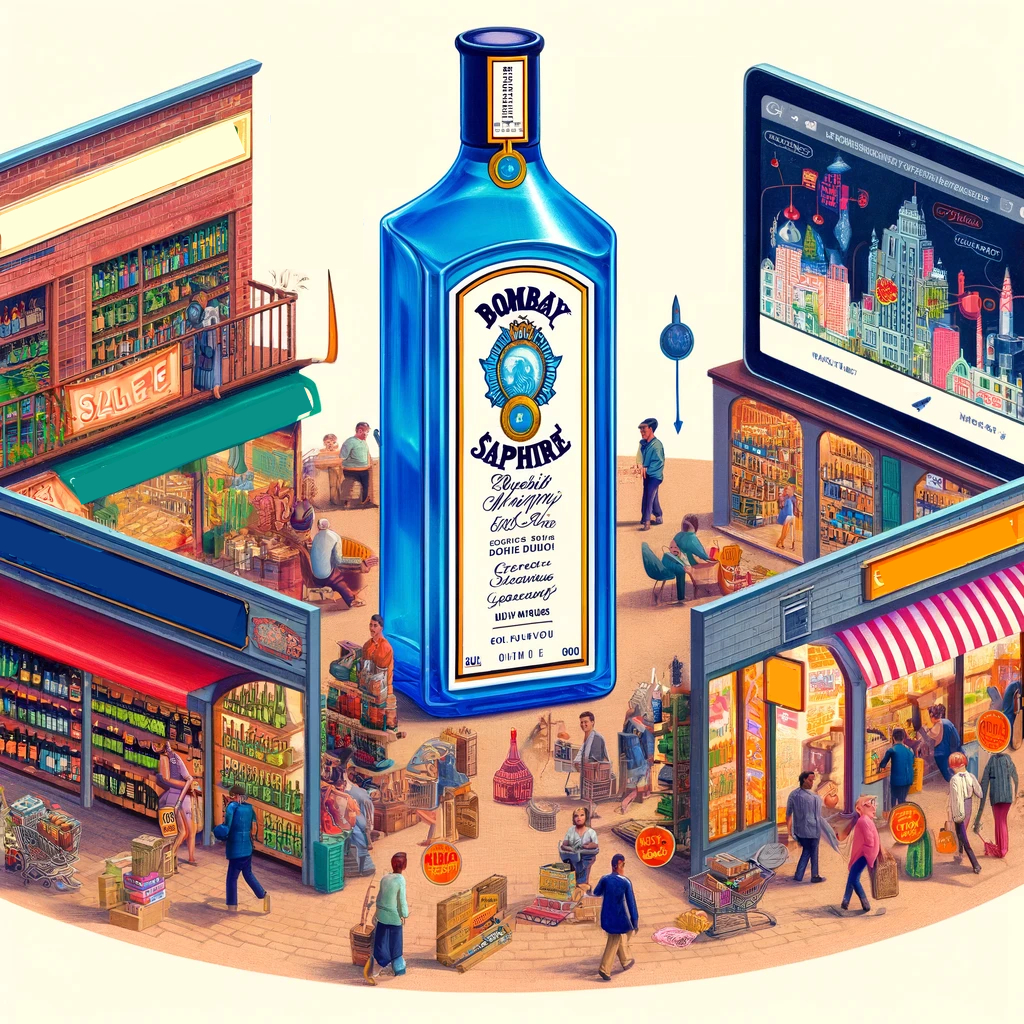
Understanding the Price Range
Like all spirits, the price of Bombay Sapphire Gin can vary widely depending on several factors, including bottle size, retailer, and geographical location. Generally, a 750ml bottle of Bombay Sapphire Gin ranges from $20 to $30 in the United States. However, prices can fluctuate based on state taxes, shipping costs if purchasing online, and special editions or variations of the gin.
For instance, Bombay Sapphire’s standard offering is its London Dry Gin, which falls within the price range mentioned. However, the brand also offers Bombay Sapphire East, a variation with additional botanicals like Thai lemongrass and Vietnamese black peppercorn, which might come with a slightly higher price tag due to its unique ingredients.
Where to Buy
Local Liquor Stores
Your local liquor store is a great place to start. Prices might be a bit higher compared to big box retailers, but local stores often run sales or offer discounts on spirits.
Big Box Retailers
Chains like Costco, Walmart, or Total Wine often offer competitive prices on spirits, including Bombay Sapphire Gin. These retailers can offer lower prices due to their bulk purchasing power.
Online Retailers
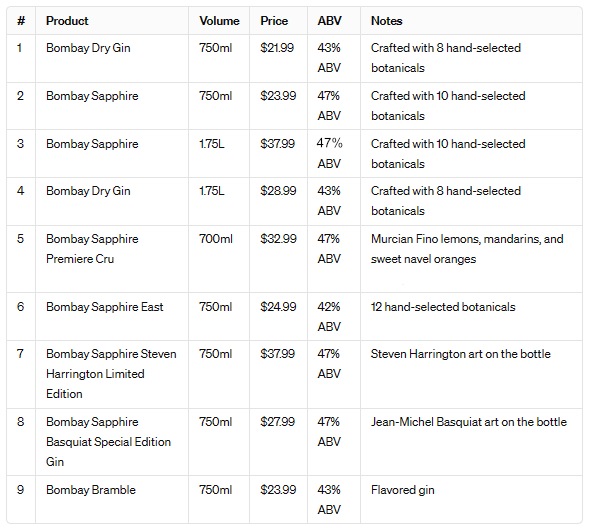
Websites like Flaviar or Caskers are fantastic resources for buying spirits, especially if you’re looking for convenience or a specific edition of Bombay Sapphire Gin. Just be mindful of shipping costs, which can add to the overall price.
Tips for Buying
- Compare Prices: Before making a purchase, compare prices between a few retailers. Sometimes, the price difference can be significant, especially when including potential shipping costs for online purchases.
- Look for Sales or Discounts: Sign up for newsletters from your favorite liquor stores or online retailers to stay informed about sales, discounts, or promotional events.
- Consider Buying in Bulk: If you’re planning a party or simply love Bombay Sapphire, consider buying in bulk to save money in the long run. Some retailers offer discounts on multiple bottle purchases.
- Check for Special Editions: If you’re a collector or simply enjoy trying new gins, keep an eye out for limited edition releases from Bombay Sapphire. These can be a bit pricier but offer a unique experience for gin enthusiasts.
Conclusion
Bombay Sapphire Gin is a beloved spirit known for its quality and versatility. Whether you’re a seasoned gin aficionado or new to the world of botanical spirits, understanding the price range and knowing where and how to shop can enhance your experience.
Frequently Asked Questions

What is the alcohol percentage in Bombay Sapphire gin?
Bombay Sapphire gin has an alcohol percentage of 40%. This is a standard alcohol content for most gins, making it a great base for cocktails.
What are some popular cocktails that can be made with Bombay Sapphire?
There are many cocktails that can be made with Bombay Sapphire gin. Some popular ones include the classic gin and tonic, the gin fizz, the Tom Collins, and the Aviation. You can also experiment with creating your own cocktails using Bombay Sapphire as the base.
Where does Bombay Sapphire gin originate from?
Bombay Sapphire gin originates from England. It is produced at the Laverstoke Mill distillery in Hampshire, which is open to the public for tours and tastings.
What botanicals are used in the production of Bombay Sapphire?
Bombay Sapphire gin is made with ten botanicals, including juniper berries, coriander seeds, angelica root, orris root, liquorice, cassia bark, cubeb berries, grains of paradise, lemon peel, and almonds. These botanicals are carefully selected and sourced from all over the world to create the unique flavor profile of Bombay Sapphire gin.
How does Bombay Sapphire compare to Tanqueray in terms of quality and taste?
Both Bombay Sapphire and Tanqueray are high-quality gins with distinct flavor profiles. Bombay Sapphire is known for its smooth and balanced taste, with a focus on the botanicals, while Tanqueray has a more juniper-forward flavor. Ultimately, the choice between the two comes down to personal preference.
Can Bombay Sapphire be enjoyed neat, or is it best mixed?
While Bombay Sapphire can certainly be enjoyed neat, it is best mixed in cocktails. Its complex flavor profile and smooth finish make it a great base for a variety of cocktails, from classic gin and tonics to more complex creations.
Empress Gin: Revealing the Secrets of Its Unique Flavor and Color
Empress 1908 Gin, an artisanal and distinctive spirit, originates from Canada and is produced by the acclaimed Victoria Distillers, who are renowned for their dedication to innovation and excellence. Consequently, this gin is distinguished by its striking indigo hue and unique flavor. Furthermore, its rich color and intricate taste profile stem from a selection of thoughtfully chosen botanicals, most notably the butterfly pea blossom, which imparts both a deep color and a touch of intrigue to the gin.
Empress 1908 Gin, launched in 2017, was crafted to honor the historic Fairmont Empress Hotel in Victoria, British Columbia. Peter Hunt and the team at Victoria Distillers developed this recipe to capture the essence and rich heritage of the hotel.
The gin’s signature indigo color, a serendipitous result during distillation, originates from butterfly pea blossoms. Moreover, these blossoms, in combination with other meticulously chosen botanicals, contribute significantly to its unique flavor profile. This includes elements such as juniper, coriander, grapefruit peel, ginger root, cinnamon, rose, and lavender.
The gin’s name, “Empress 1908,” references the year the hotel was built, reflecting its Edwardian architecture with French Renaissance revival influences. Victoria was a crucial hub for the Canadian Pacific Railway and the maritime trade in the Pacific during that era.
Since its introduction, Empress Gin has become increasingly popular, celebrated for its remarkable color and flavor. Its natural ability to change color from indigo to shades of pink or blue when mixed adds an extra element of allure.
The blend of both traditional and modern botanicals, skillfully combined with its aesthetic appeal, effectively mirrors the spirit of the Empress Hotel and stands as a tribute to the creativity of its creators. Furthermore, the widespread acclaim of Empress 1908 Gin serves as a testament to the passion and skill involved in its making.
Production Process
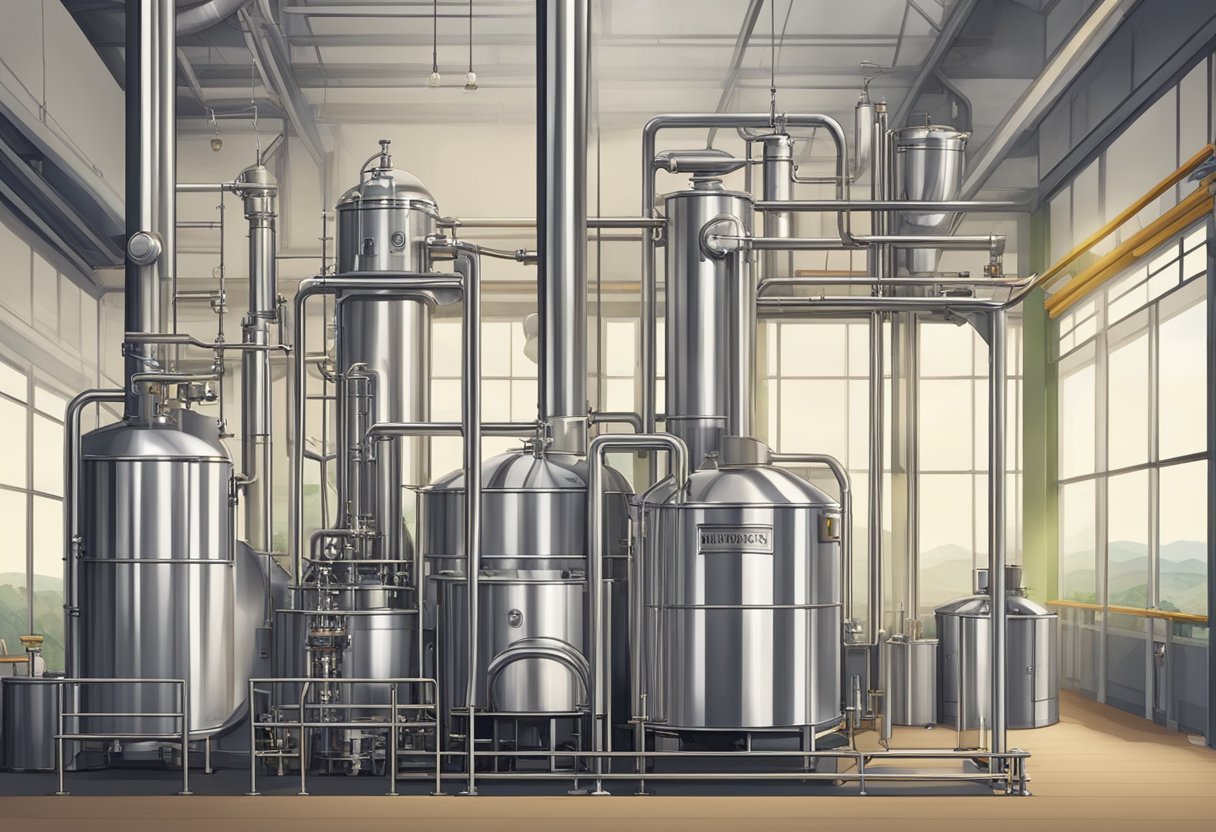
Botanical Ingredients
This unique spirit is distinguished by its specially chosen botanicals that shape its rich and exotic taste. Its primary ingredients are juniper, giving it the quintessential gin character, grapefruit peel and coriander seed introducing a citrus zest, cinnamon bark infusing a spicy warmth, and rose petals along with ginger root providing a subtle floral essence with a spicy undercurrent.
Production Technique
The production of Empress 1908 Gin starts with an overnight maceration of its botanicals, setting the stage for the distillation process. Crafted by Victoria Distillers, among the most established artisan distilleries in British Columbia, the gin is distilled in small-batch copper pot stills. This careful maceration period allows for a full extraction of flavors, resulting in a gin that’s exceptionally smooth and well-rounded.
In the making of Empress Gin, an eco-friendly approach is adopted during distillation. The initiative to repurpose the heat from the stills conserves around 7,000 liters of water for each batch. This dedication to water conservation and energy efficiency differentiates Empress 1908 Gin from its competitors.
The distinctive distillation approach of Empress Gin, merging select botanicals with an eco-conscious production method, yields a spirit that stands out. Whether mixed in traditional gin cocktails or paired with premium mixers, it promises an indulgent experience.
Tasting Profile
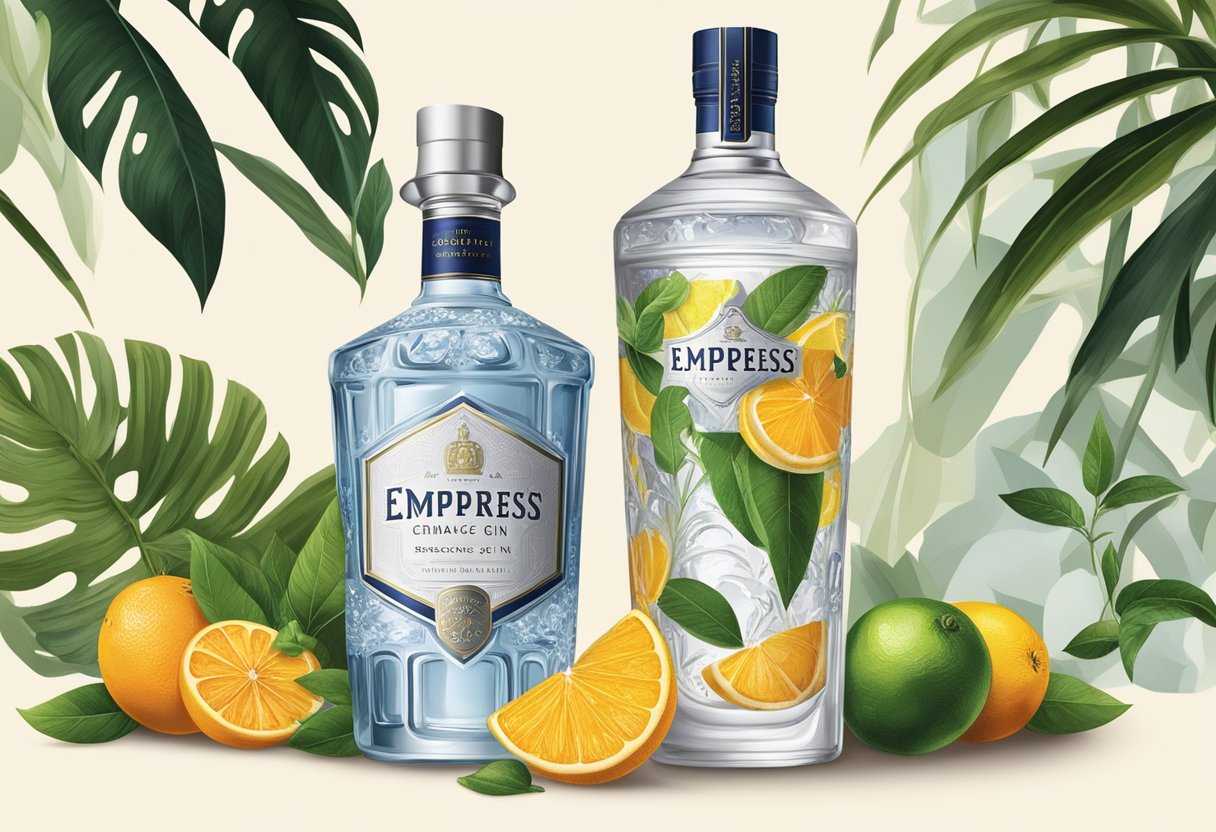
Tasting a spirit like Empress 1908 Gin is a multi-sensory experience that unfolds in several stages:
Visual Appeal
Your experience begins the moment you pour the gin into a glass. Empress Gin is renowned for its striking deep indigo color. This visual allure sets the stage for the tasting journey.
Aroma
As you bring the glass closer, take a gentle inhale. Initially, you’ll notice the clean, piney scent of juniper, the hallmark of any classic gin. Following this, the zesty and bright notes of grapefruit peel become apparent, along with the sweet, citrusy essence of coriander seed. Moreover, if you allow the gin to breathe for a moment, subtle hints of the warm, woody spice from cinnamon bark and the delicate floral notes from rose petals will gradually emerge, complemented by a slight undertone of the sharp, spicy fragrance of ginger root.
First Sip
Take a small sip and let the gin coat your palate. The juniper will likely be the first to greet your taste buds, followed quickly by the fresh, tangy burst of citrus from the grapefruit. The coriander adds complexity with its warm, nutty, and slightly spicy flavor.
Mid-Palate
the gin lingers in your mouth, the warm spices become more pronounced. The cinnamon provides a comforting warmth without overpowering, and it might remind you of baked goods or spiced tea. This is where the balance of flavors starts to shine, as the spice from the cinnamon and ginger root is softened by the elegance of the rose petals.
Finish
As you swallow, the gin leaves a smooth and lingering finish. There’s a slight heat from the ginger root, which is tempered by the floral notes that remain on the tongue. The overall finish is clean, with a balanced interplay between warmth, spice, and floral sweetness.
Overall Experience: The tasting journey of Empress 1908 Gin is one of balance and harmony, with each botanical playing its part without overwhelming the others. It’s a gin that’s as much a delight to the eyes as it is to the palate, offering a unique experience that invites you to explore the depth and subtlety of its flavors. Whether you’re a gin connoisseur or a curious newcomer, Empress Gin makes for a memorable tasting adventure.
Complexity with Mixers
If you decide to enjoy Empress 1908 Gin with mixers or in a cocktail, you must try the spirit on its own. That way you are going to appreciate the transformation when mixers are crafted onto the playing field. The change in taste and in color is a sensory trip. The pH-sensitive butterfly pea blossom causes the gin to change color from its original indigo to various shades of pink or lavender, depending on the mixer’s acidity. It’s exciting to taste the different aspects of the gin that it lets out.
Empress Gin Recipes
The silky finish of Empress Gin lends itself to a myriad of cocktail creations. Among the favorites are:
Empress & Tonic: This spin on the time-honored gin and tonic uses Empress 1908 Gin and manifests a captivating shift from indigo to pink when tonic water is added.
Victoria’s Garden: A delightful concoction of Empress Gin blended with lemon juice, simple syrup, and crushed basil leaves, adorned with slices of cucumber and lemon.
Empress Martini: An elegant variation of the traditional martini, combining Empress Gin with vermouth and a hint of orange bitters, and finished with a twist of lemon or a few olives.
Remember to take advantage of Empress 1908 Gin’s color-changing magic as you mix your drinks. The transformation from a royal indigo to an alluring pink with the addition of citrus or tonic water not only makes for an impressive visual but also can spark up conversations.
Signature Empress Gin Cocktails
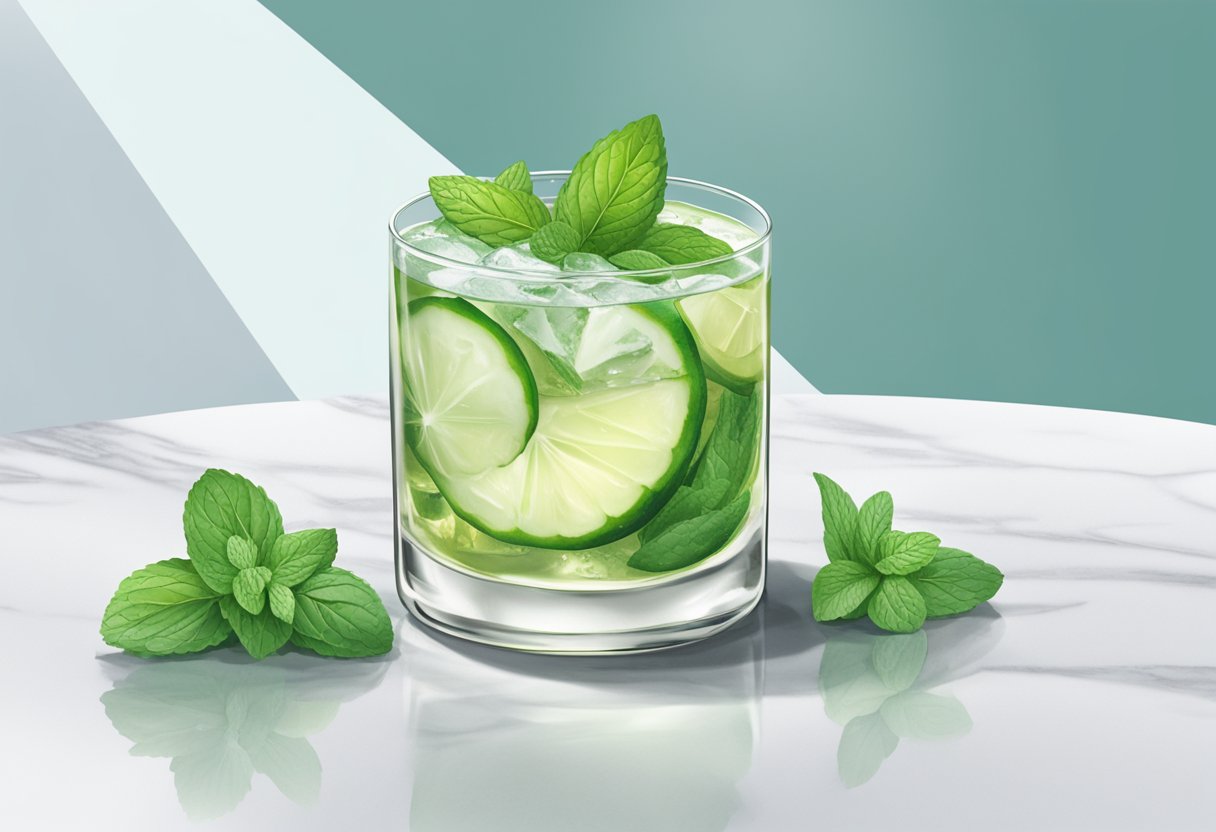
Empress Gin captivates with its deep indigo shade and complex taste profile, serving as a base for both timeless and inventive cocktails. Here’s a selection of Empress 1908 Gin’s signature concoctions that highlight the spirit’s distinctiveness.
Empress & Tonic: This flagship reinvents the gin and tonic experience. Blending Empress Gin with high-quality tonic water yields a sophisticated and invigorating drink. To craft it, combine 2 oz of Empress 1908 Gin with 3 oz of premium tonic water and accentuate with a slice of grapefruit.
Empress Gin Strawberry Basil Smash: This is another tantalizing option, marrying the gin’s botanicals with the aromatic essence of strawberries and basil. Crush strawberries and basil leaves together, then add Empress 1908 Gin, lemon juice, and simple syrup, shake well, and serve in a glass.
Empress Lavender Lemonade: For a touch of floral elegance. This perfumed blend infuses the gin with handcrafted lemonade and lavender syrup. Mix the gin with lemon juice and lavender syrup, top with a splash of sparkling water, and garnish with lavender.
Royal Hawaiian: This choice offers a touch of sophistication, featuring a tropical mix of Empress 1908 Gin, orgeat syrup, pineapple juice, and lemon juice. Delivering a harmony of tastes. Shake these ingredients with ice, strain into an elegant glass, and decorate with a pineapple slice or a cherry.
Empress Pear Rosemary Cocktail: A distinct fusion of sweet pear and aromatic rosemary that complements the gin’s botanical blend. Shake the gin with pear nectar, lemon juice, simple syrup, and a sprig of rosemary, strain into a glass over ice, and garnish with a pear slice.
These signature drinks highlight the multifaceted character of this spirit. And are perfect for enhancing your cocktail repertoire, whether you’re hosting a soiree or refining your bartending flair.
Mixing Techniques
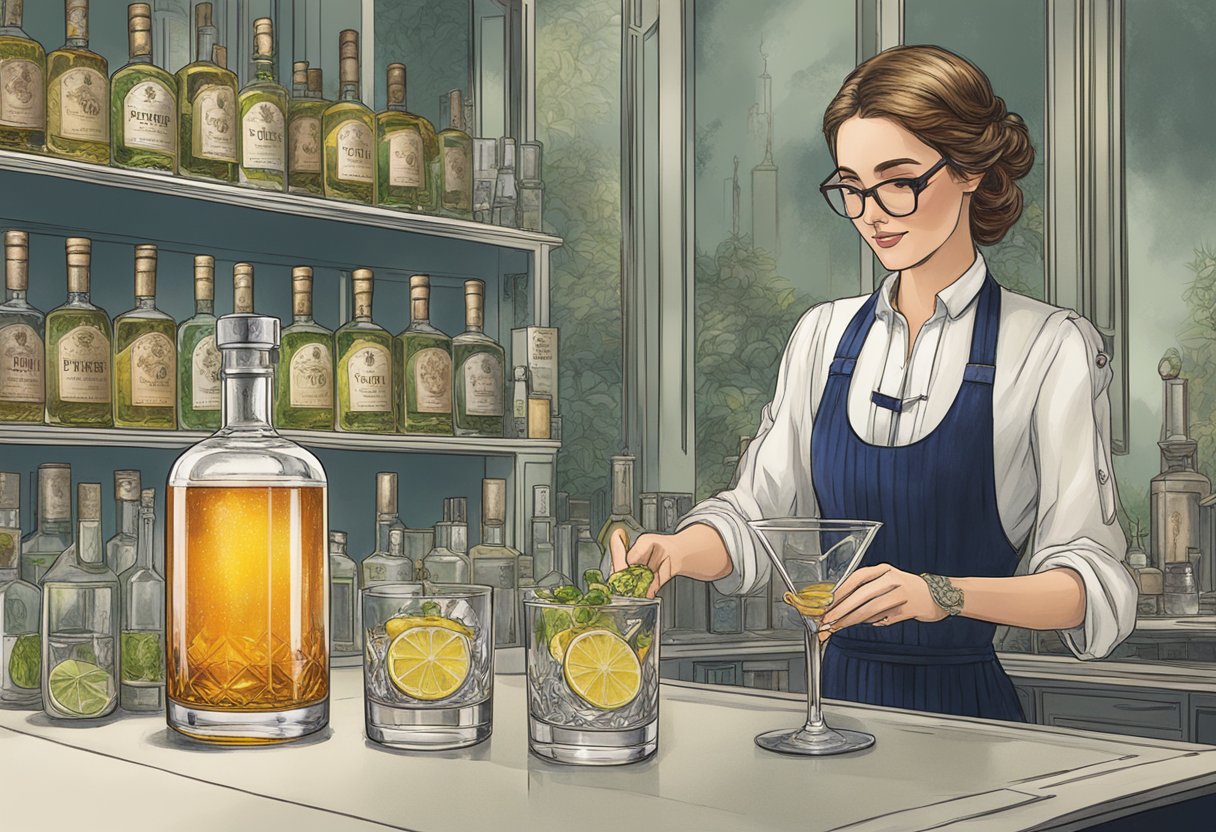
Download this short guide for more detail about shaking, stirring and other basic information about mixology.
Shaking VS Stirring
The decision to shake or stir a cocktail can significantly influence its final texture and taste. Specifically, cocktails containing ingredients like citrus juices, egg whites, or cream should be shaken. This action introduces air and consequently ensures that the components are thoroughly combined, resulting in a harmonious blend.
On the other hand, cocktails where the gin, whiskey or other spirits are the main focus, and the mixers play a secondary role in complementing and enhancing the flavor of the alcohol. Such as an Old Fashioned, a Martini, and a Manhattan. The term given to mixed drinks like these is spirit-forward cocktails. The cocktails benefit from stirring. This technique preserves the subtle flavors and gives the drink a smooth, clear consistency. These types of drinks are often preferred by those who appreciate the distinct flavors of the spirits themselves.
Keep these tips in mind:
Shake: for cocktails that have citrus, egg whites, or cream.
Stir: for preparing refined spirit-centric drinks, including those with Empress 1908 Gin.
Garnishing Essentials
The art of garnishing is essential in elevating both the visual charm and taste of a cocktail. For enhancing your Empress Gin creations, consider these garnishing strategies:
Citrus Twists: Craft a slender twist of citrus peel using a channel knife or peeler, then twist it over the drink to release the essential oils, adding a fragrant complexity. Lemon or grapefruit peels are perfect for this.
Floral Accents: Incorporate edible flowers like those used in the Empress Gin and Blueberry Mojito for a splash of color and subtle flavor. Always choose flowers that are safe for consumption and free from chemicals.
Herbal Garnishes: A sprig of fresh herbs can tie together the cocktail’s taste profile, particularly when they echo the gin’s botanicals. Mint, rosemary, and basil are favorites for this purpose.
Fruit Slices: Add a slice of fruit inside the glass or on the rim for a burst of flavor and color. Citrus and berries complement Empress 1908 Gin cocktails well.
By selecting garnishes that align with the flavors in your cocktail and present a feast for the eyes, you can craft an Empress Gin cocktail that is as stunning as it is delectable. Attention to the finer points of mixing and garnishing can turn a good cocktail into an unforgettable one.
Pairing Empress Gin
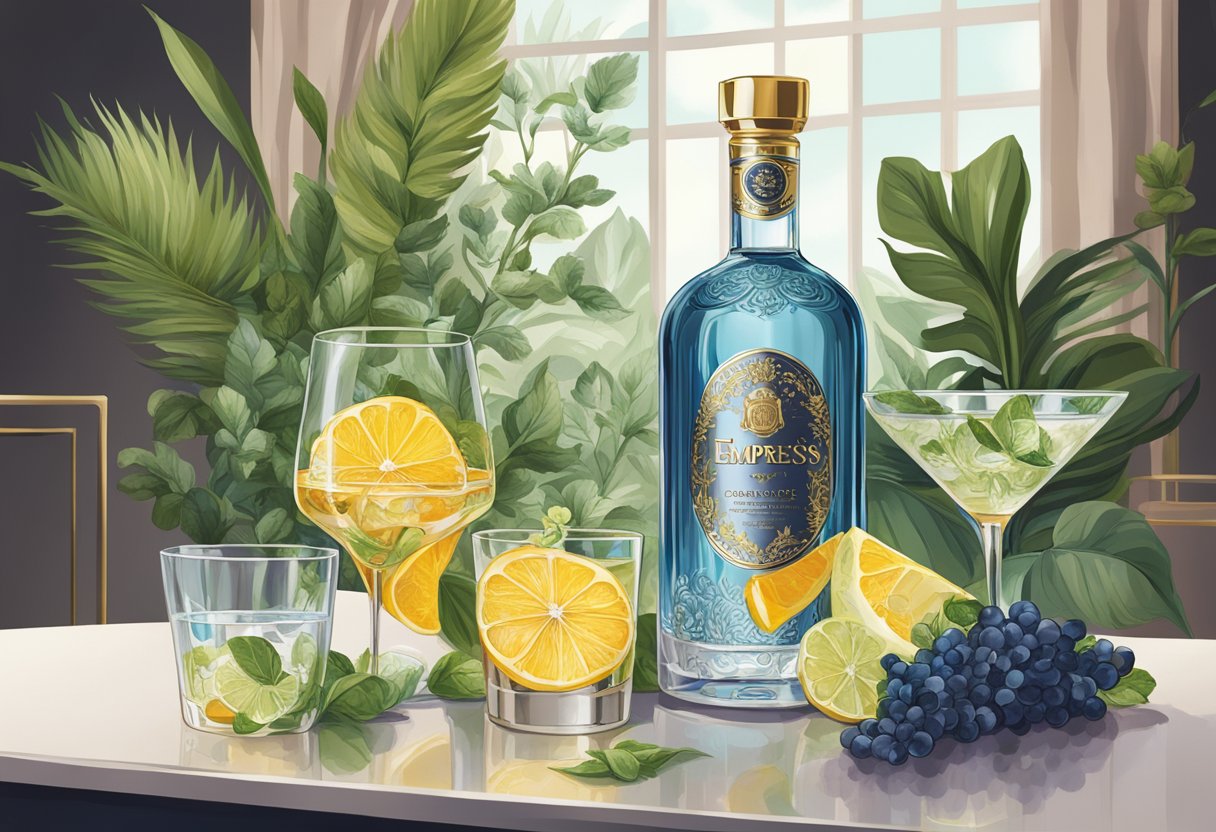
Culinary Combinations
The unique taste of Empress 1908 Gin, with its blend of floral, earthy, and citrus notes, makes it a prime candidate for pairing with food. Opt for fresh components that can draw out these flavors. Berries, for instance, marry well with the gin, their fresh tartness enhancing its floral undertones.
For a classic complement, turn to seafood such as charcoal-grilled shrimp or pan-seared scallops. These dishes let the distinct notes of Empress 1908 Gin come to the forefront. Similarly, dishes seasoned with herbs, like rosemary-infused chicken or pasta tossed with garlic and herbs, accentuate the gin’s earthy notes.
Occasions and Events
Empress 1908 Gin’s versatility lends itself to a range of social settings and events. Consider these ideas for featuring Empress Gin:
Cocktail Parties: Showcase original Empress 1908 Gin cocktails, like the innovative Empress Gin and Blueberry Mojito, to offer guests a taste of something extraordinary.
Holiday Gatherings: Bring an elegant flair to holiday celebrations with themed cocktails, such as the Duchess Punch—a blend of Empress 1908 Gin, cranberries, rosemary, and bubbly—that’s sure to dazzle.
Dinner Parties: Introduce a touch of class to your dinner parties with Empress Gin pairings. Offer a pear and rosemary cocktail as an accompaniment to your starters or main dishes. In essence, Empress 1908 Gin is an exquisite spirit that complements a wide array of dishes and adds an element of elegance to any celebration. Its distinctive flavor and striking color are guaranteed to make an impression on your guests.
Serving Suggestions
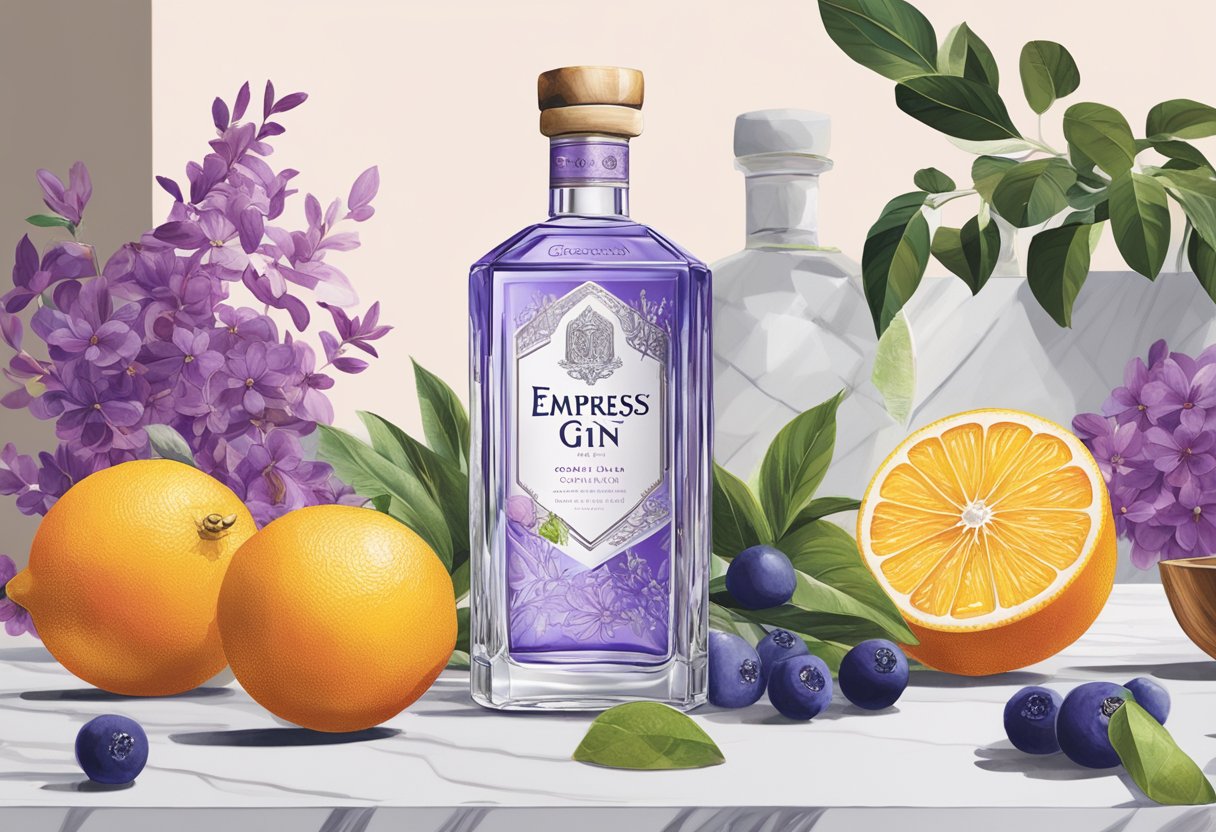
Glass Selection
Choosing the appropriate glassware is crucial when presenting Empress Gin cocktails, as it enhances both the aesthetic and sensory enjoyment. For an Empress Gin & Tonic, a highball glass brimming with ice is suitable. Conversely, an Empress Martini is best served in a classic martini glass to elevate its elegance.
Other glassware choices include:
Coupe Glass: Best suited for timeless and chic cocktails such as the Bee’s Knees.
Rocks Glass: The go-to for succinct drinks like the Empress Pear Rosemary Cocktail.
Collins Glass: Apt for elongated, invigorating beverages like the Raspberry Bramble.
Optimal Chill and Dilution
The excellence of your Empress 1908 Gin cocktails partly lies in serving them at the correct chill level with precise dilution. It’s about finding the harmony among temperature, taste, and texture.
Take the Empress Gin and Blueberry Mojito, which requires a generous amount of ice to maintain its coolness and zest as detailed in its recipe. Meanwhile, a stirred Empress Martini achieves dilution through stirring over ice, which not only cools but also mellows the drink for a silky mouthfeel.
Bear in mind these general practices:
Shaken cocktails: Use ample ice when shaking to properly chill and dilute the cocktail.
Stirred cocktails: Stir with ice until the concoction is sufficiently cold and diluted.
Built-in-glass cocktails: Start with ice in the glass, then pour the ingredients over it to chill the beverage while controlling dilution.
Explore different Empress 1908 Gin concoctions to discover the ideal chill and dilution for each cocktail style, adhering to these foundational tips.
Buying Guide
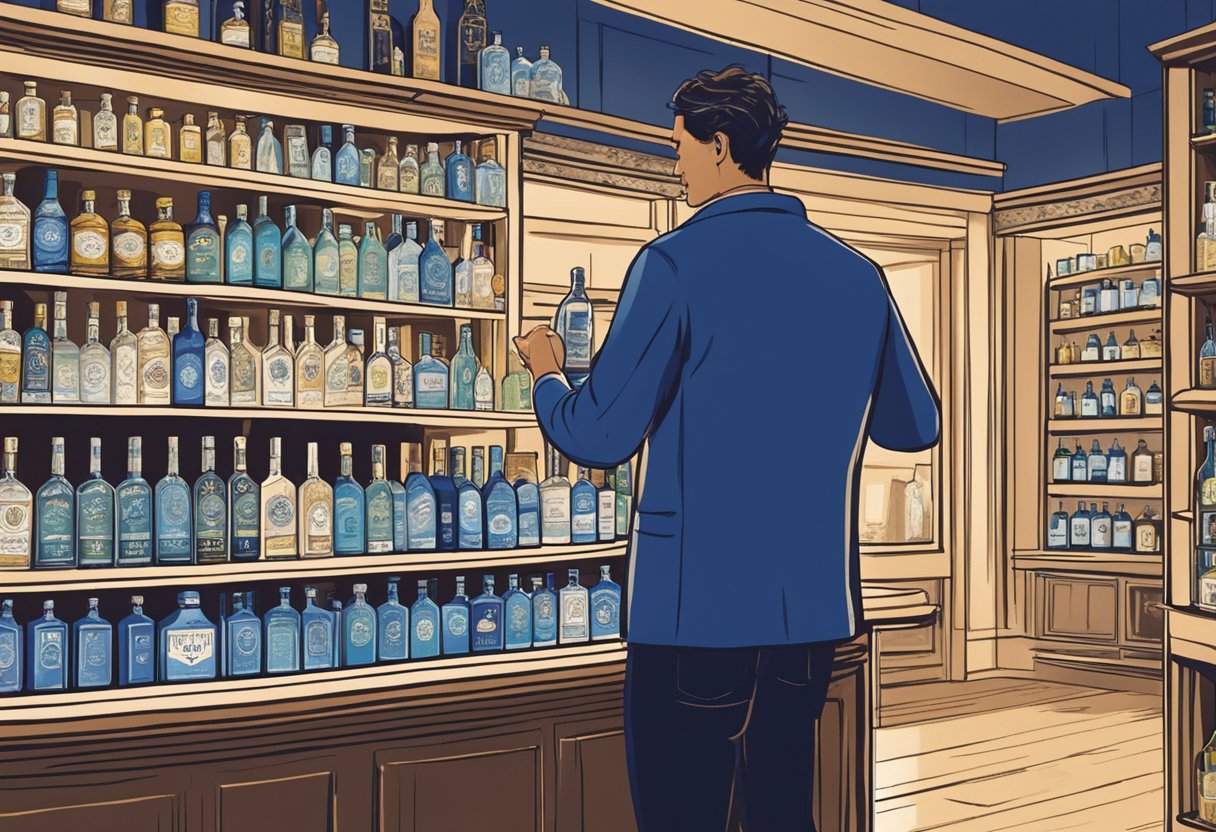
Finding Empress Gin
To locate Empress 1908 Gin, it’s important to be aware of its presence in your specific area. This gin is accessible through various online alcohol vendors as well as traditional physical stores. Its availability might differ based on the distribution channels in your region, so it could be beneficial to check with local stores about their stock of Empress 1908 Gin.
Cost Considerations
Generally, Empress 1908 Gin carries a price tag of around $40. This cost can fluctuate due to regional differences, tax rates, and retail markups. Shopping around at different vendors may yield a more economical purchase.
Selecting Your Ideal Gin
You should consider several aspects when picking out the finest gin for your palate:
Taste Variations: Gins can range from being juniper-forward to a more complex symphony of botanicals and citrus. Selecting a gin that aligns with your personal flavor preference is key.
Alcohol Strength: The strength of the gin can influence its taste intensity. Gins with a higher alcohol percentage usually offer a deeper flavor. Aim for gins that have an alcohol volume between 42.5% and 47% for a robust yet balanced profile.
Botanical Quality: The distinct blend of botanicals in each gin plays a crucial role in its unique flavor. Go for gins that boast quality, natural ingredients and a harmonious botanical mix that appeals to your tastes.
Production Techniques: The method of distillation can affect the taste and quality of the gin. Choose a gin that prides itself on a meticulous and traditional distillation method for superior taste.
Always consume gin sensibly and in moderation. Enjoy your gin exploration!
Frequently Asked Questions
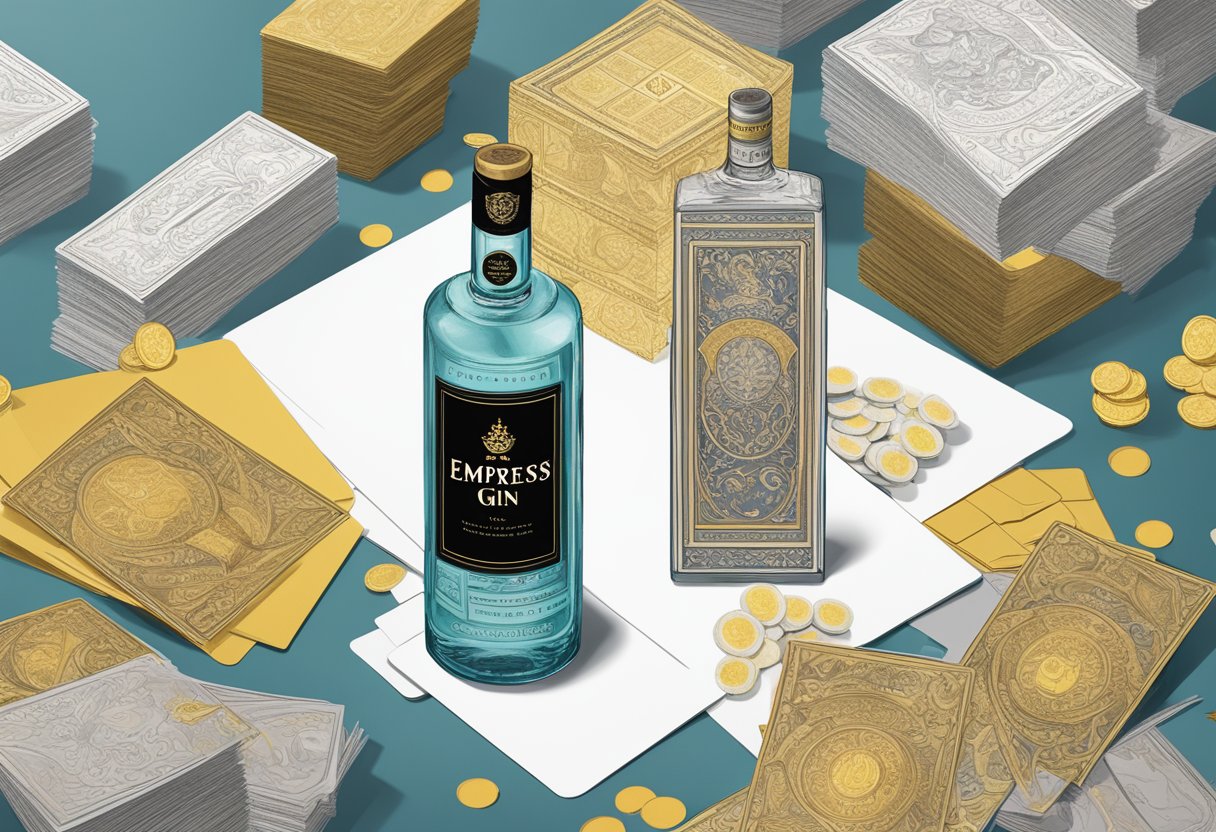
How does Empress Gin achieve its distinctive color?
Empress 1908 Gin, often referred to as Empress 1908, owes its distinctive indigo color to the addition of butterfly pea blossom. This organic component is responsible for both the gin’s vivid shade and its remarkable ability to shift color when combined with specific mixers like citrus or tonic water.
What botanicals are used in the flavor profile of Empress Gin?
Empress 1908 Gin crafts its unique flavor profile using a medley of eight botanicals, each lending a varied array of flavors to the liquor. The blend encompasses classic gin components such as juniper, coriander, and grapefruit peel, complemented by other distinctive botanicals like cinnamon, rose petals, and ginger, as well as the exclusive addition of Fairmont Empress tea, all contributing to the gin’s distinctive flavor profile.
Can you explain the taste difference between Empress Gin and traditional gins?
Empress 1908 Gin, while retaining certain characteristics of conventional gins like the juniper and citrus elements, offers a more contemporary flavor twist. The incorporation of rose petals, tea, and various other botanicals endows the spirit with a uniquely modern palate. Its nuanced floral undertones and a hint of gentle spiciness result in a richer, more intricate taste experience that sets it apart from traditional gins.
What is the most recommended way to serve Empress Gin to enhance its unique characteristics?
The ability of Empress 1908 Gin to change color makes it a perfect option for visually stunning cocktails. They are as appealing to the eye as they are to the palate. To truly savor the gin’s distinctive flavors, experts often suggest enjoying a basic Gin and Tonic. This simple serving method highlights the gin’s singular qualities. Adding a garnish like grapefruit or lemon slice, or a sprig of rosemary, can enhance the gin’s taste even further.
Where is Empress Gin distilled and what is the history of the distillery?
Victoria Distillers, located in Sidney, British Columbia, is the birthplace of Empress 1908 Gin. Established more than ten years ago by a team of skilled artisans devoted to producing high-quality spirits, this distillery formed a partnership with the renowned Fairmont Empress Hotel in Victoria. This collaboration brought together their distillation prowess and the hotel’s signature tea blend, leading to the creation of Empress Gin.
How does the inclusion of Elderflower influence the taste of Empress Gin?
Although elderflower isn’t a listed botanical in Empress 1908 Gin, the subtle floral flavors in the gin can evoke a taste reminiscent of elderflower. This characteristic is likely due to the presence of other floral components such as rose petals, which play a significant role in shaping the gin’s aromatic and complex flavor palette.
Downloads
- Bombay Sapphire: The Artful Blend of Exotic Botanicals
- Crown Royal Salted Caramel
- Belvedere Vodka Price: How Much Does It Cost?
- Glenlivet Founders Reserve: A Classic Whisky with a Modern Twist
- Best Mezcal: An All-Inclusive Guide to Top Selections
- Amazon Bar Stools: Find the Perfect Black Bar Stools with Backs
- Don Julio Tequila Price and Prestige. Sip in Style
- Home Bar Furniture: A Guide for Your Perfect Setup
- Elijah Craig Toasted Barrel: Richness of Fire-Finished Bourbon
- Maker’s Mark Cask Strength: Bold and Intense
- Home Bar Haven: Crafting Unforgettable Gatherings
- The Collins Glass: A Fascinating Journey from A London’s Coffee House to Modern Cocktail Culture
- Buchanan’s Pineapple: A Tropical Twist on Scotch Whisky.
